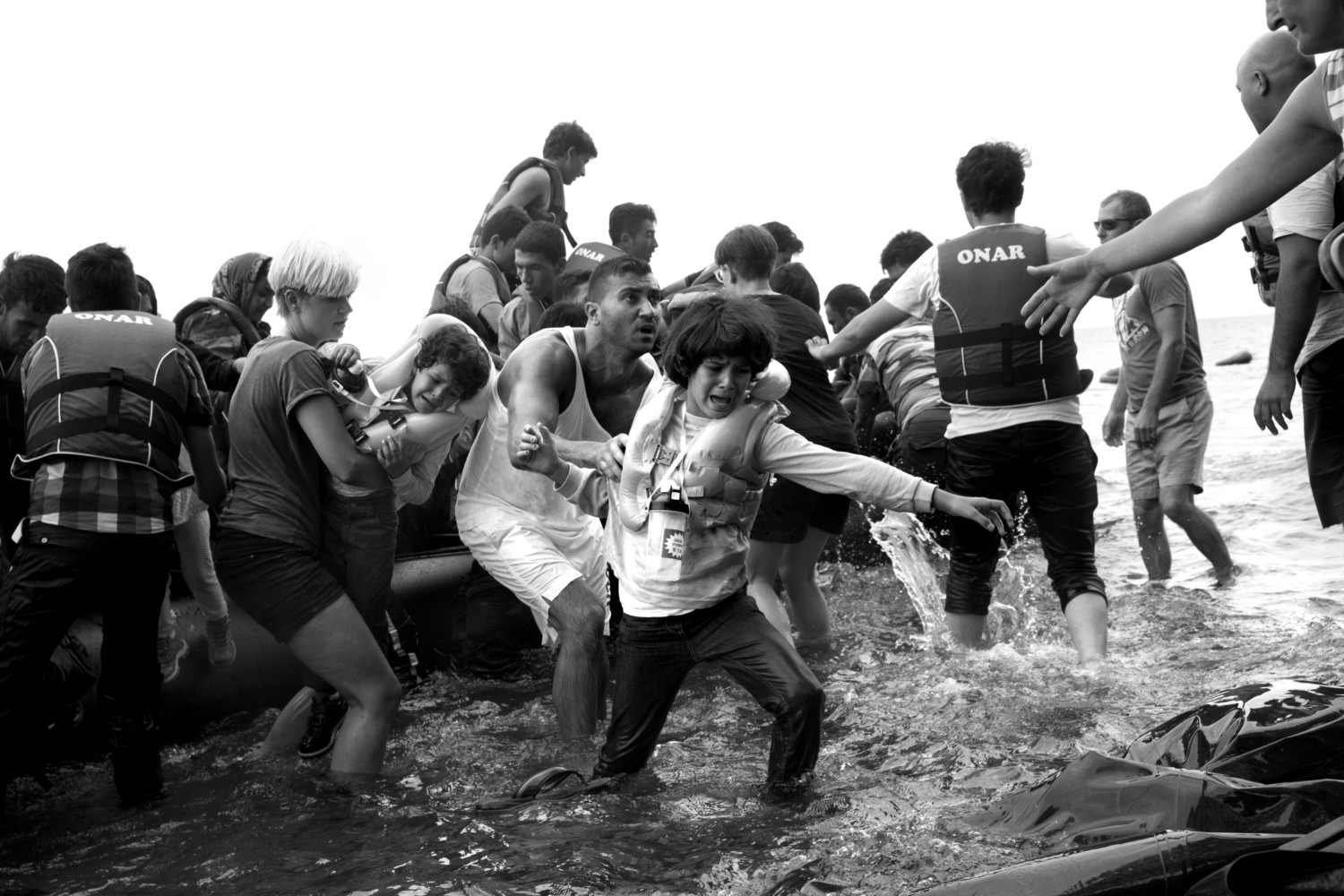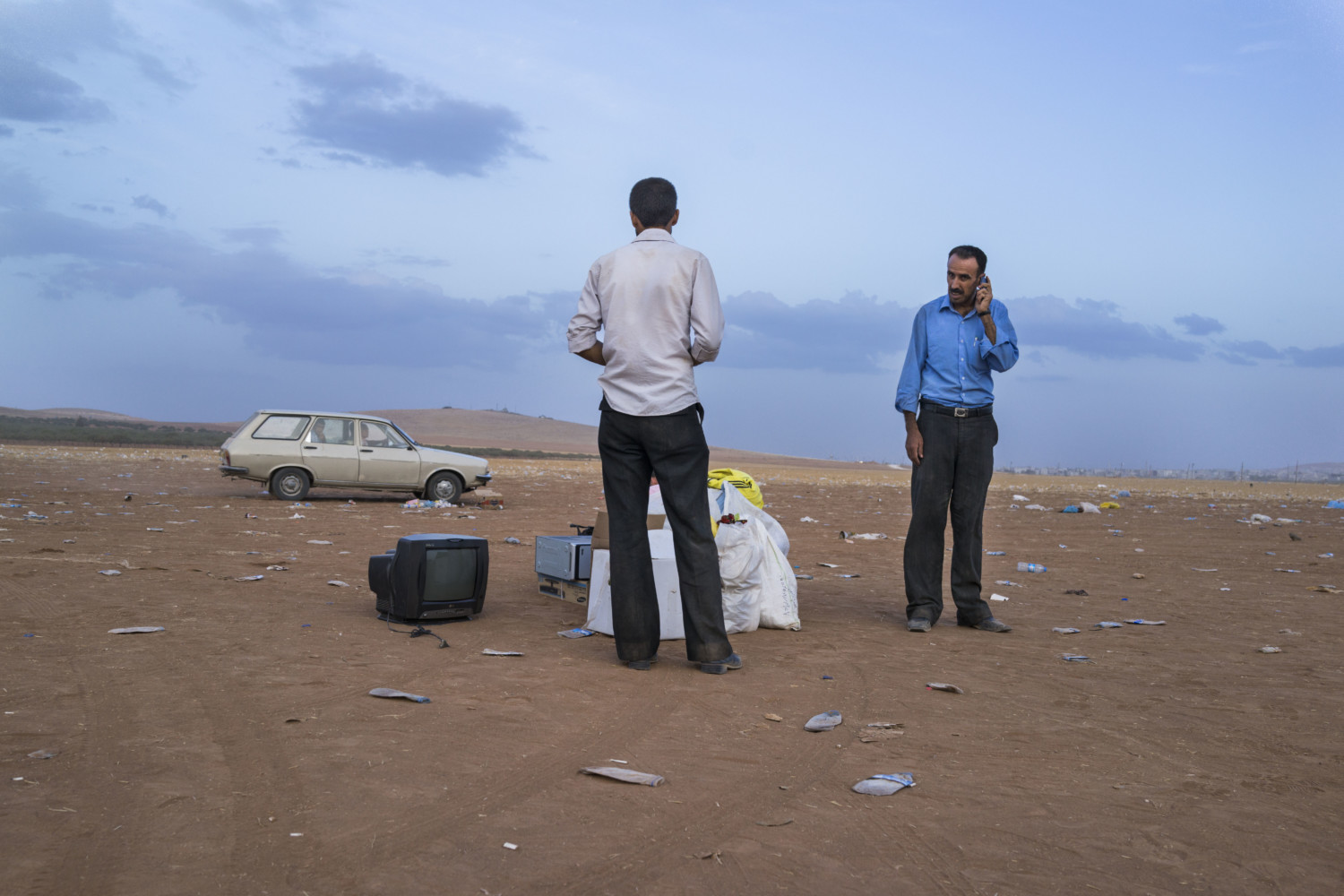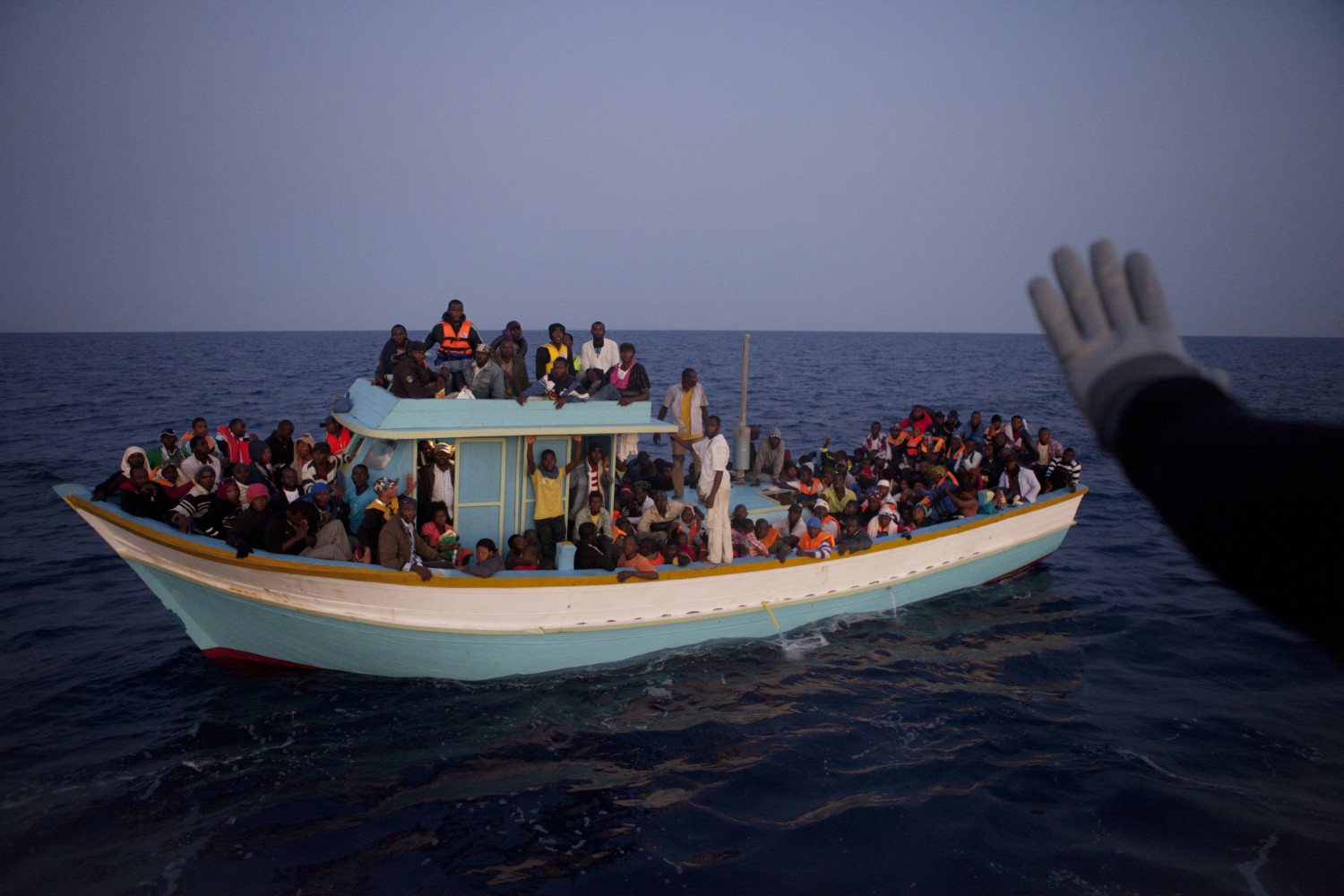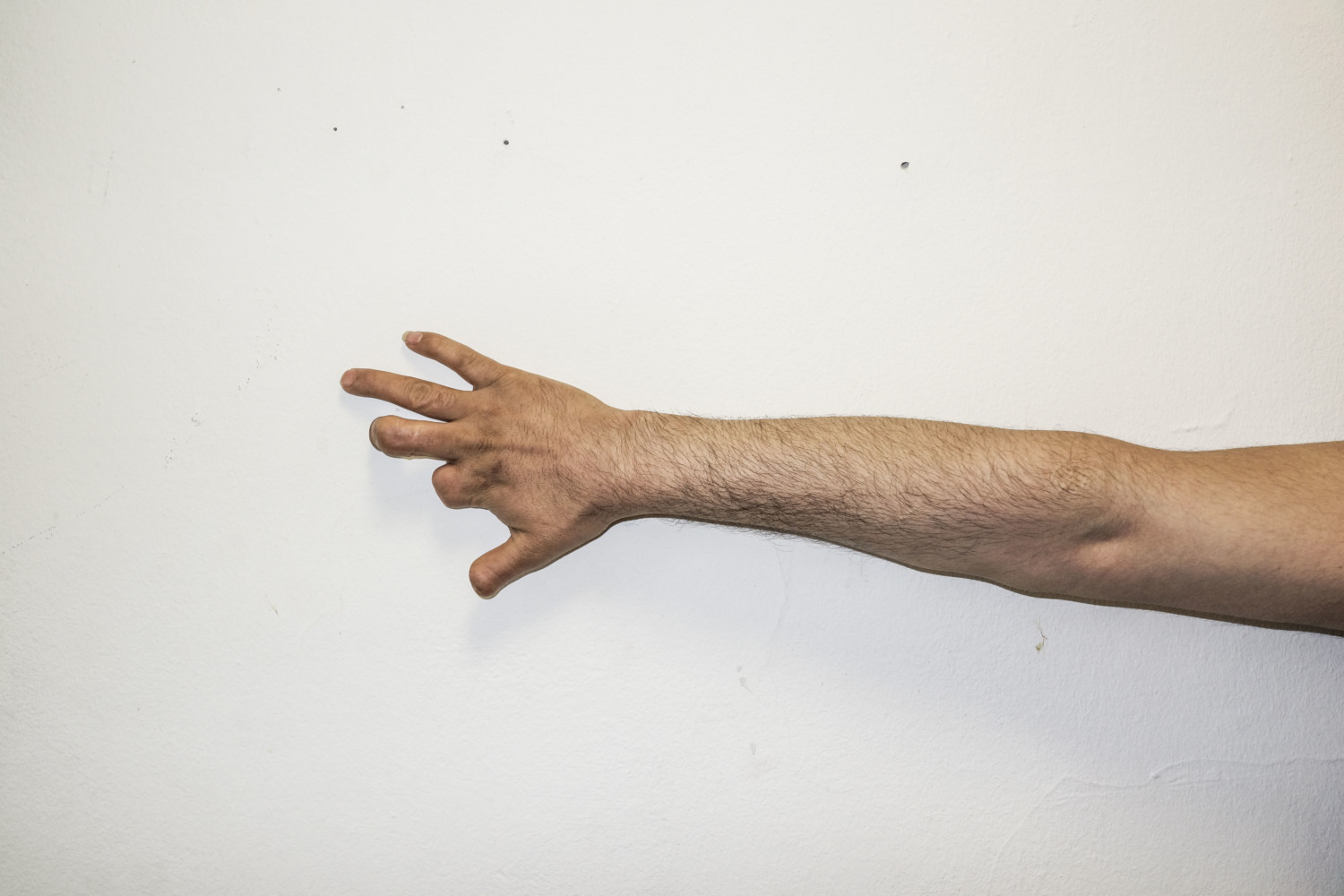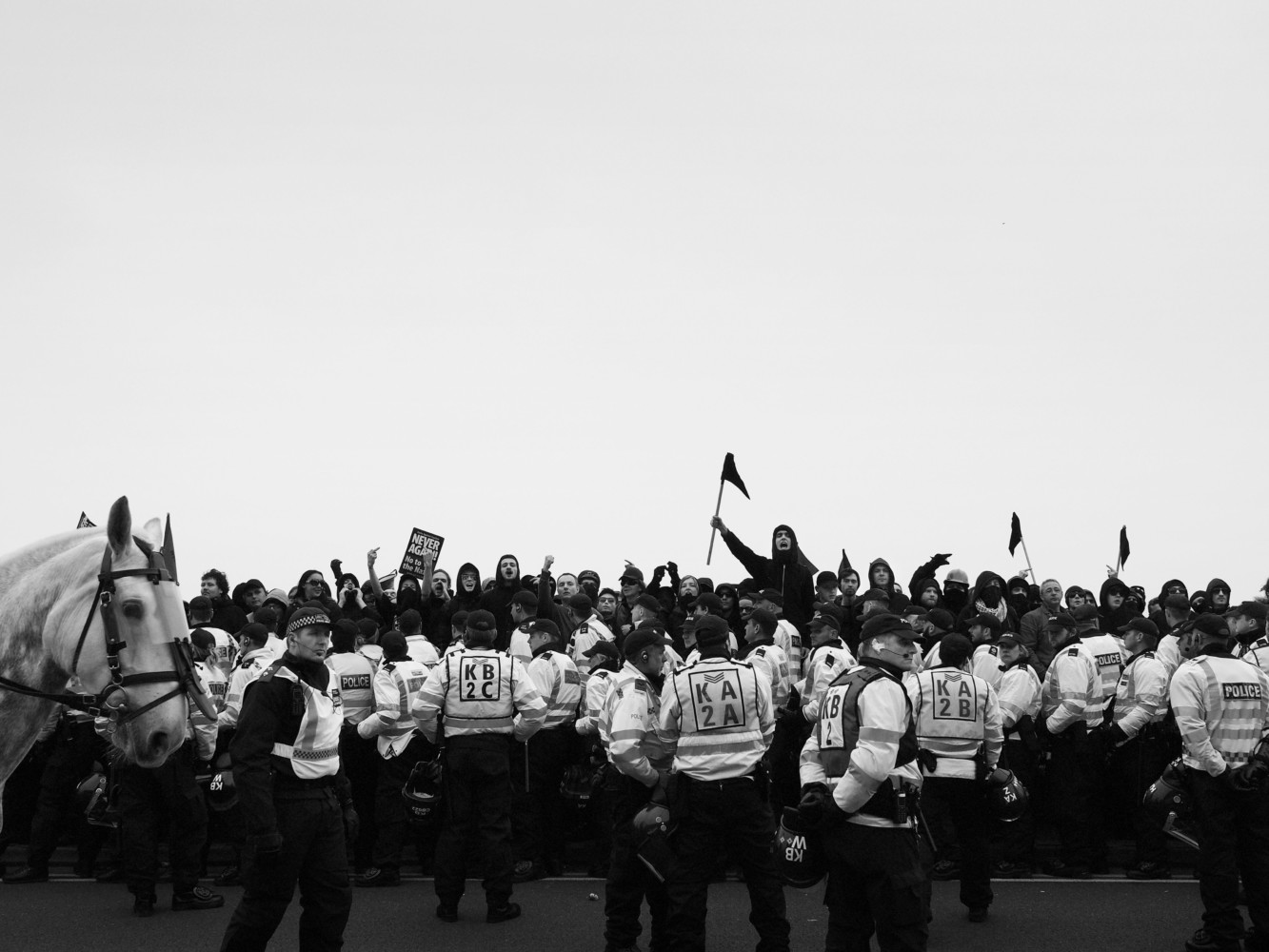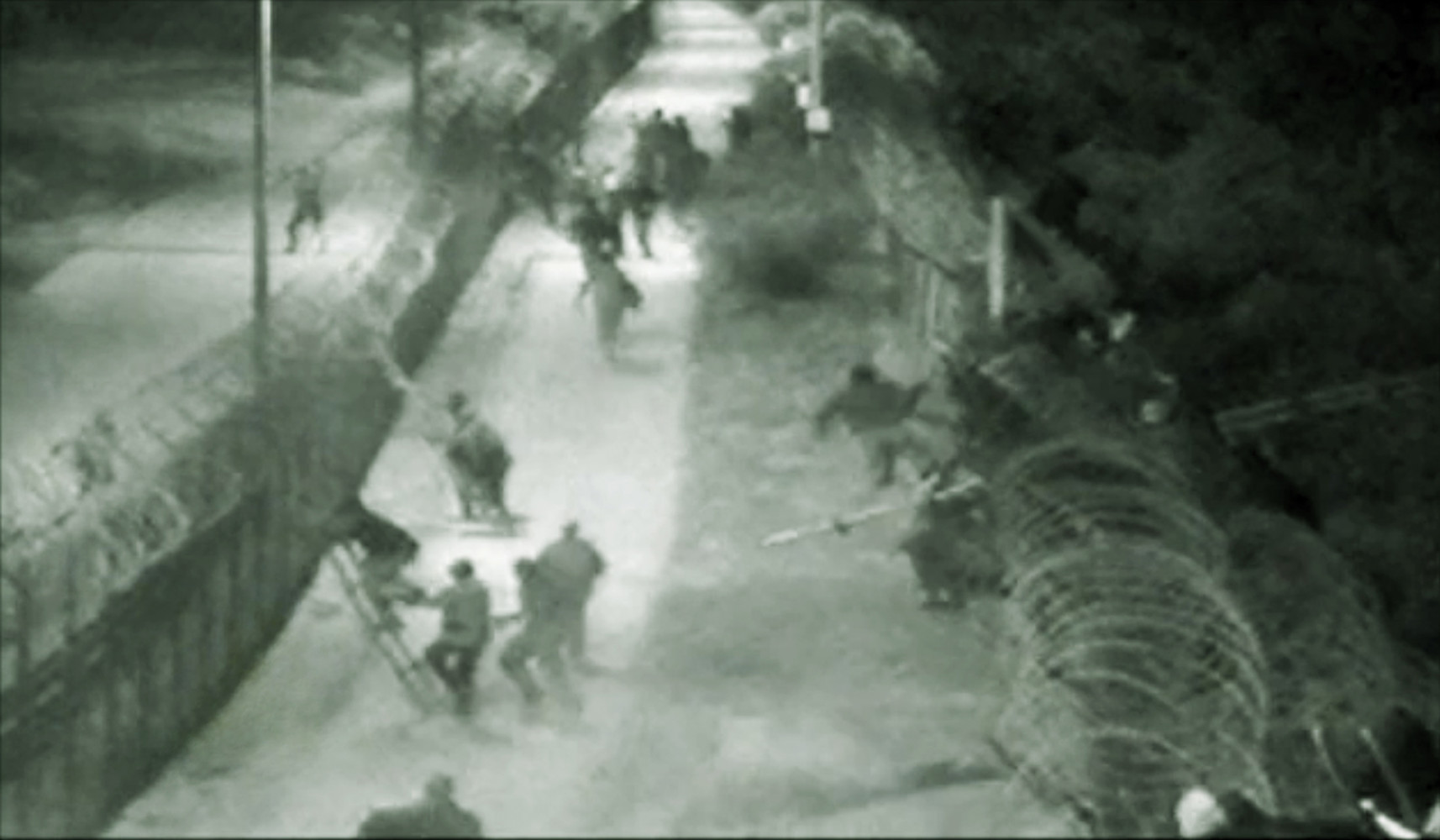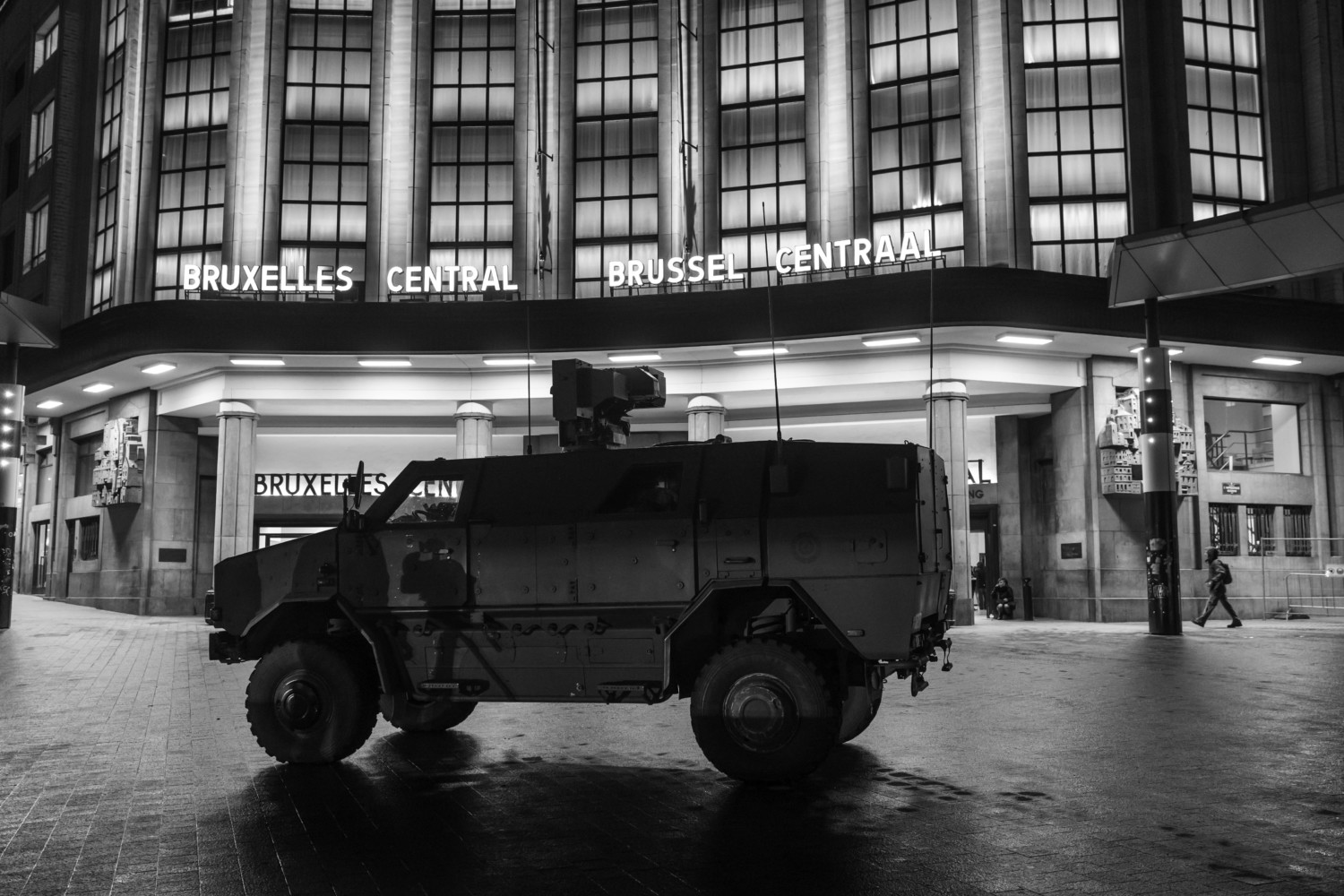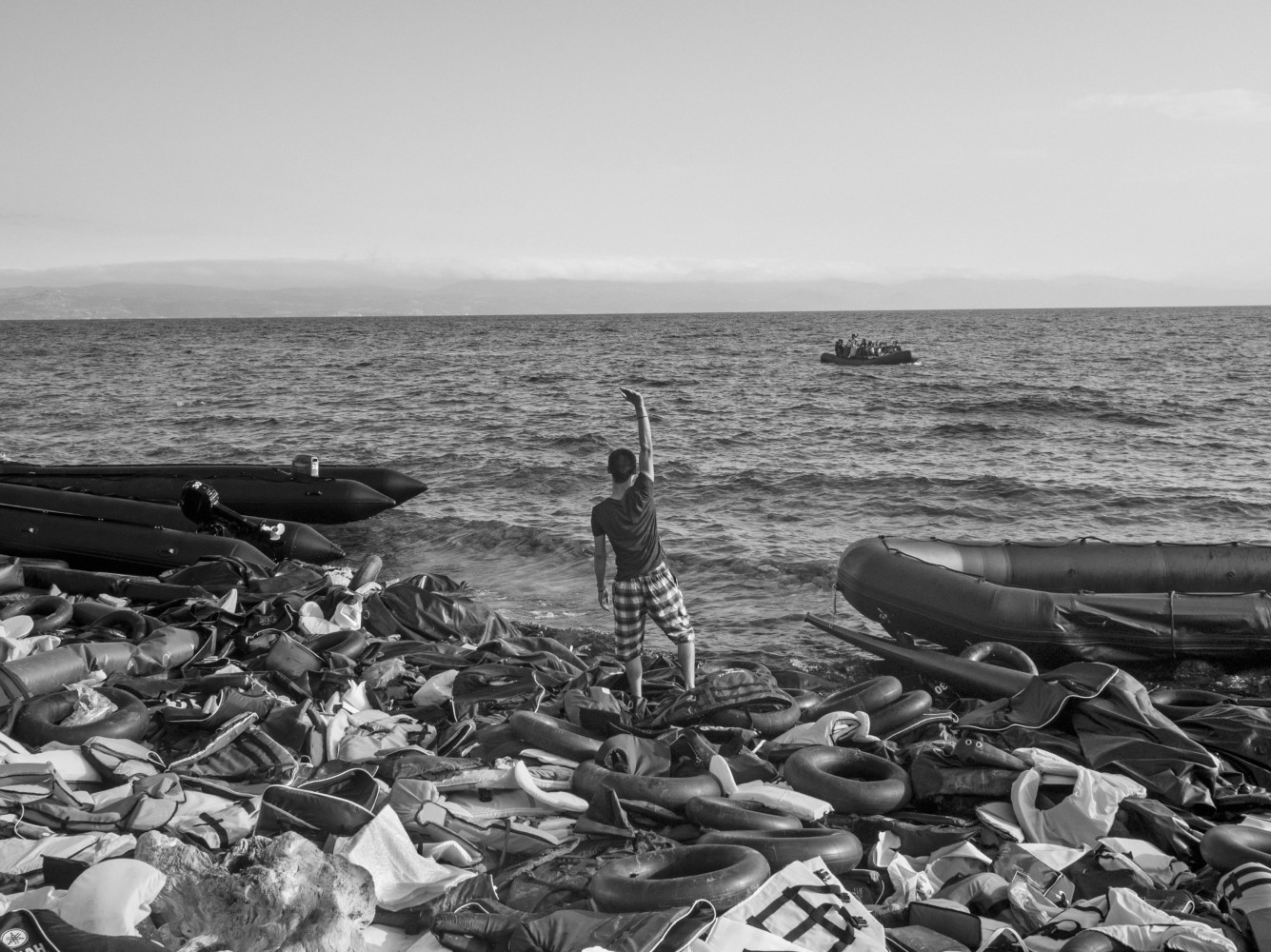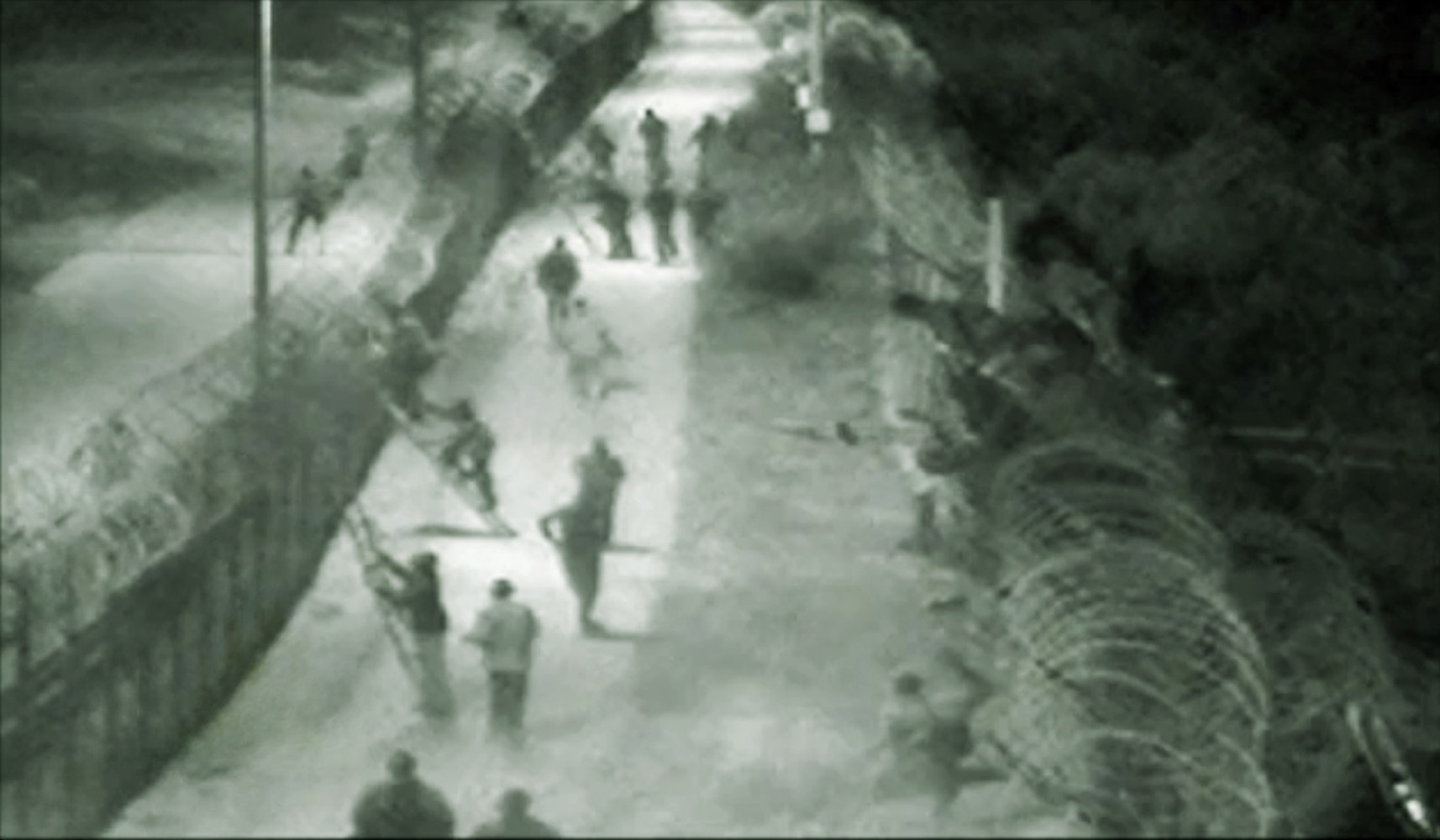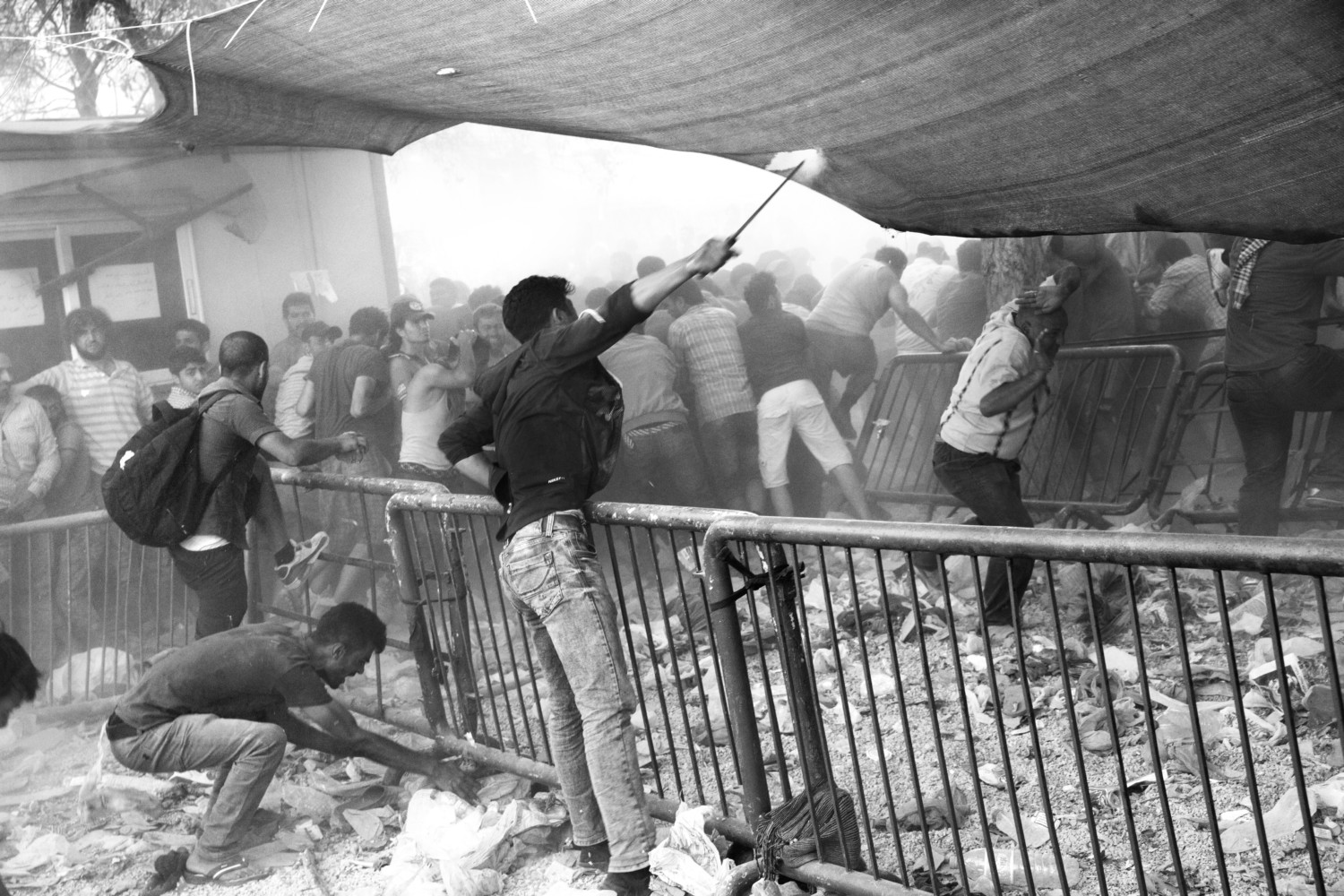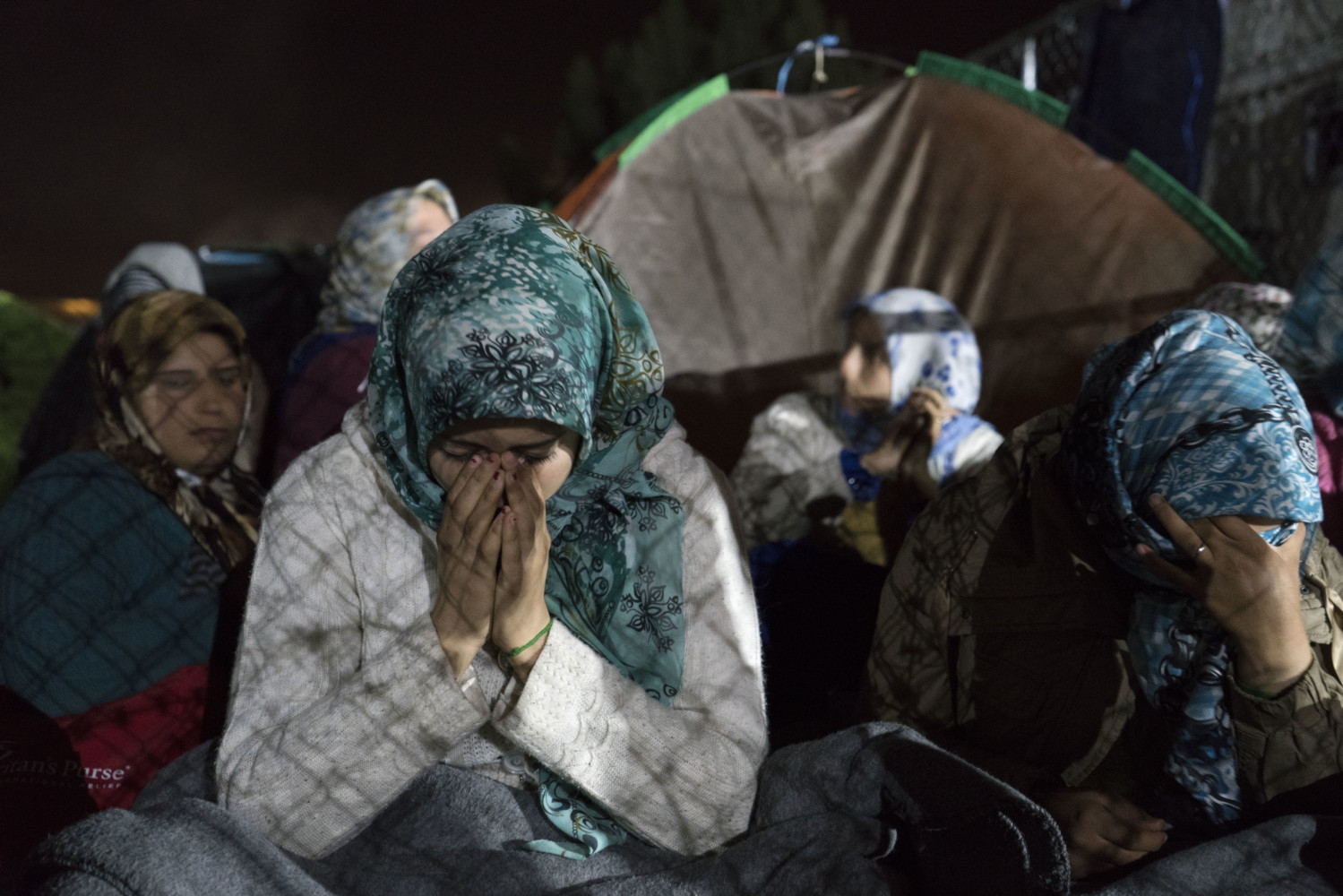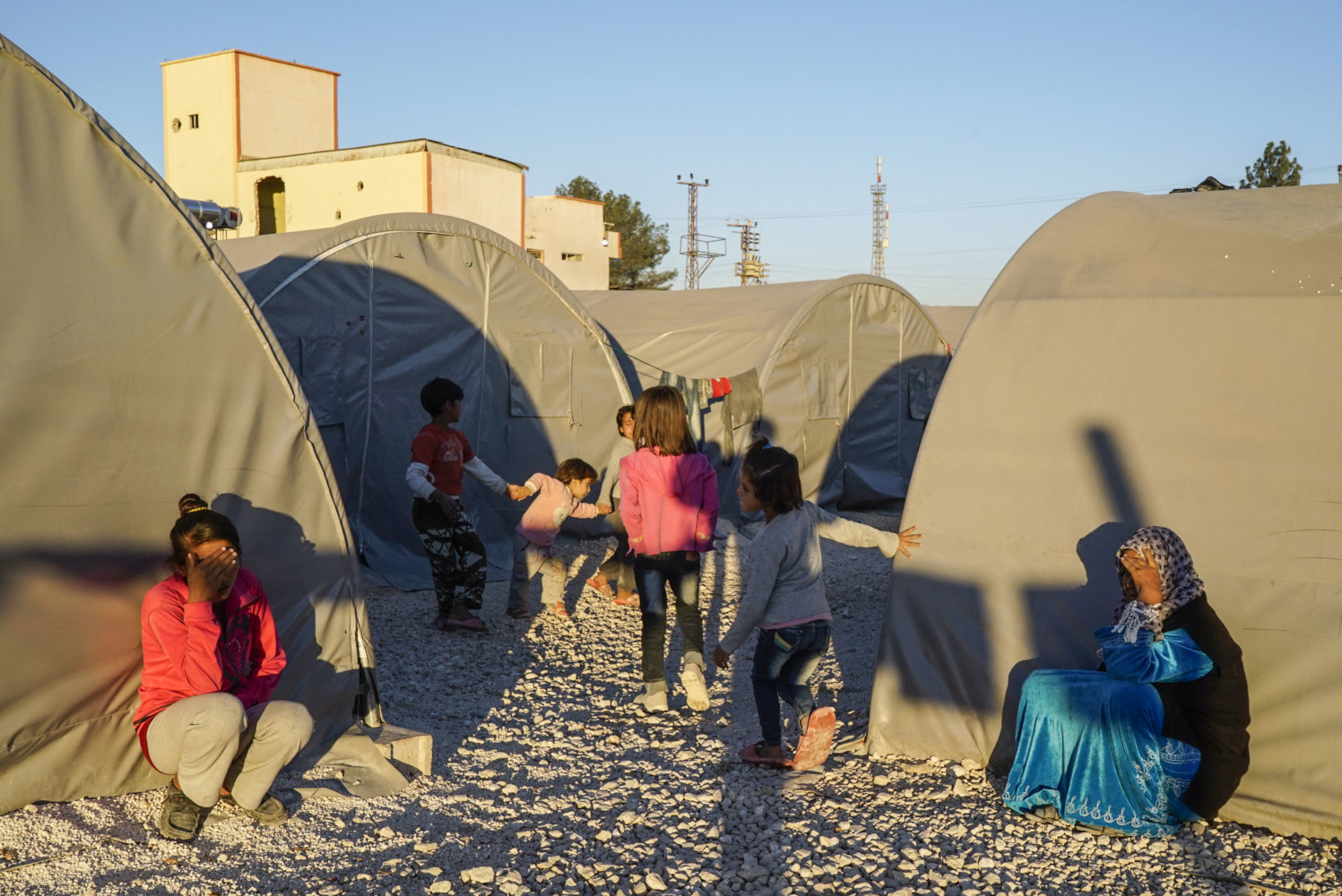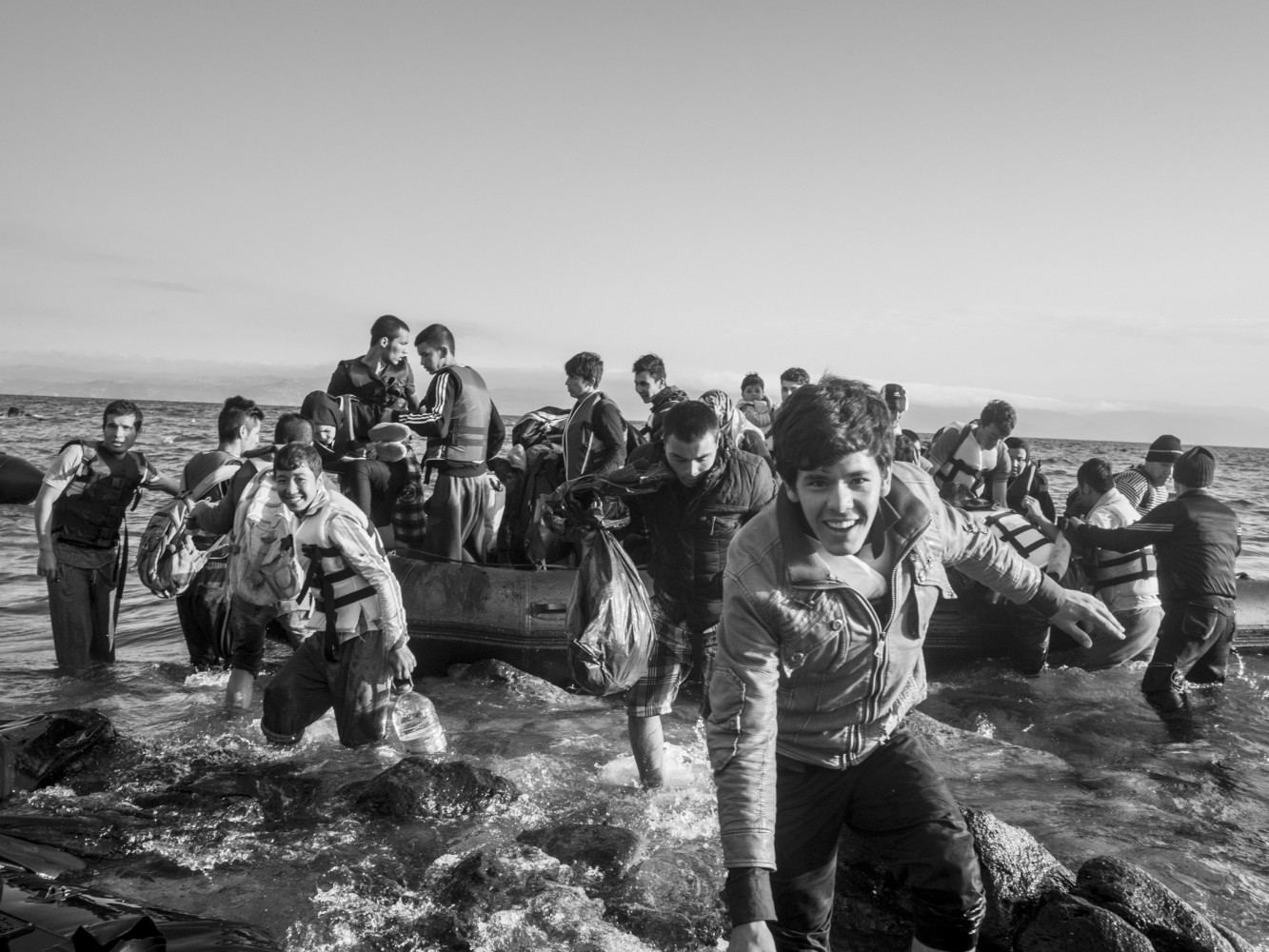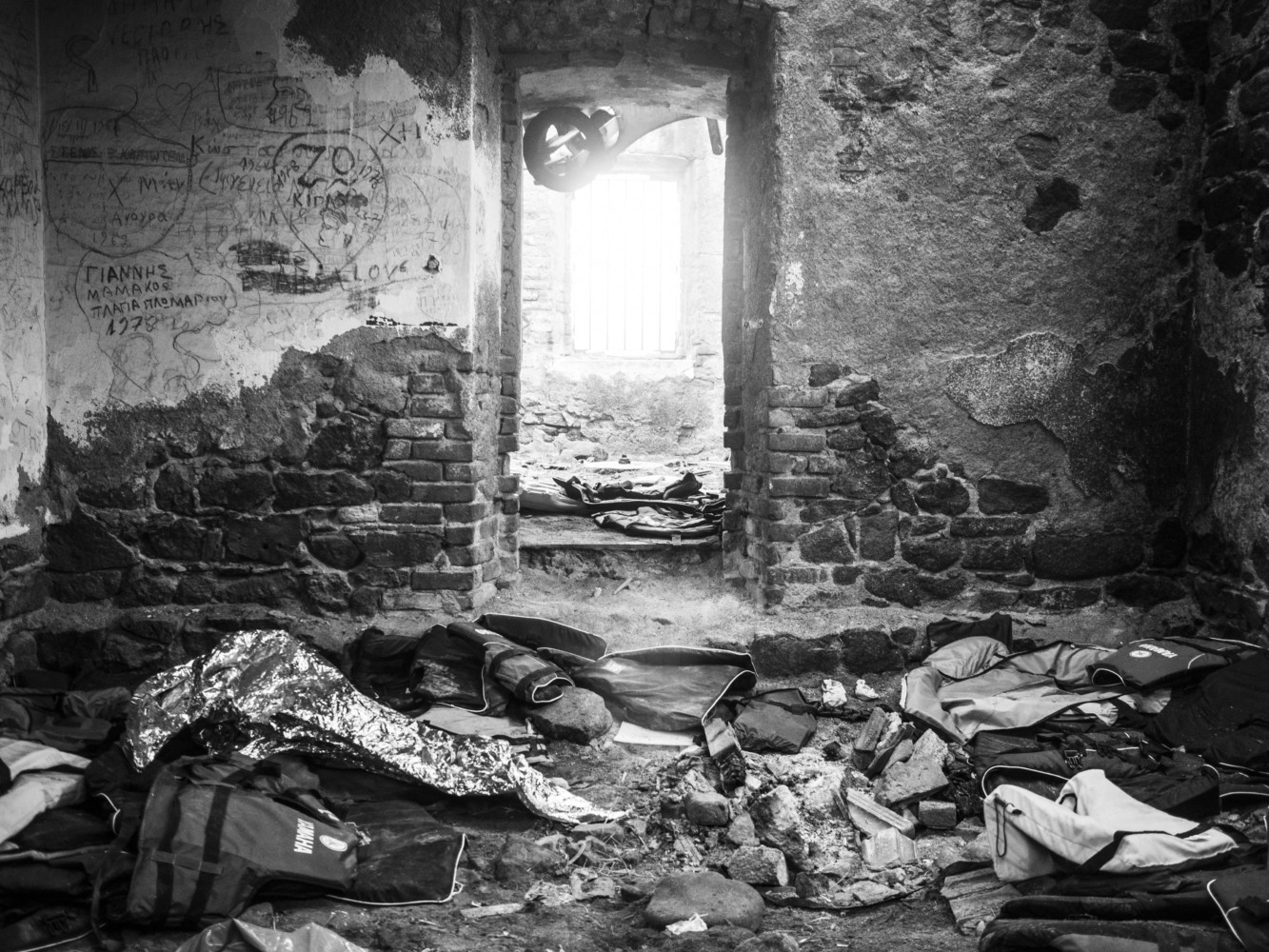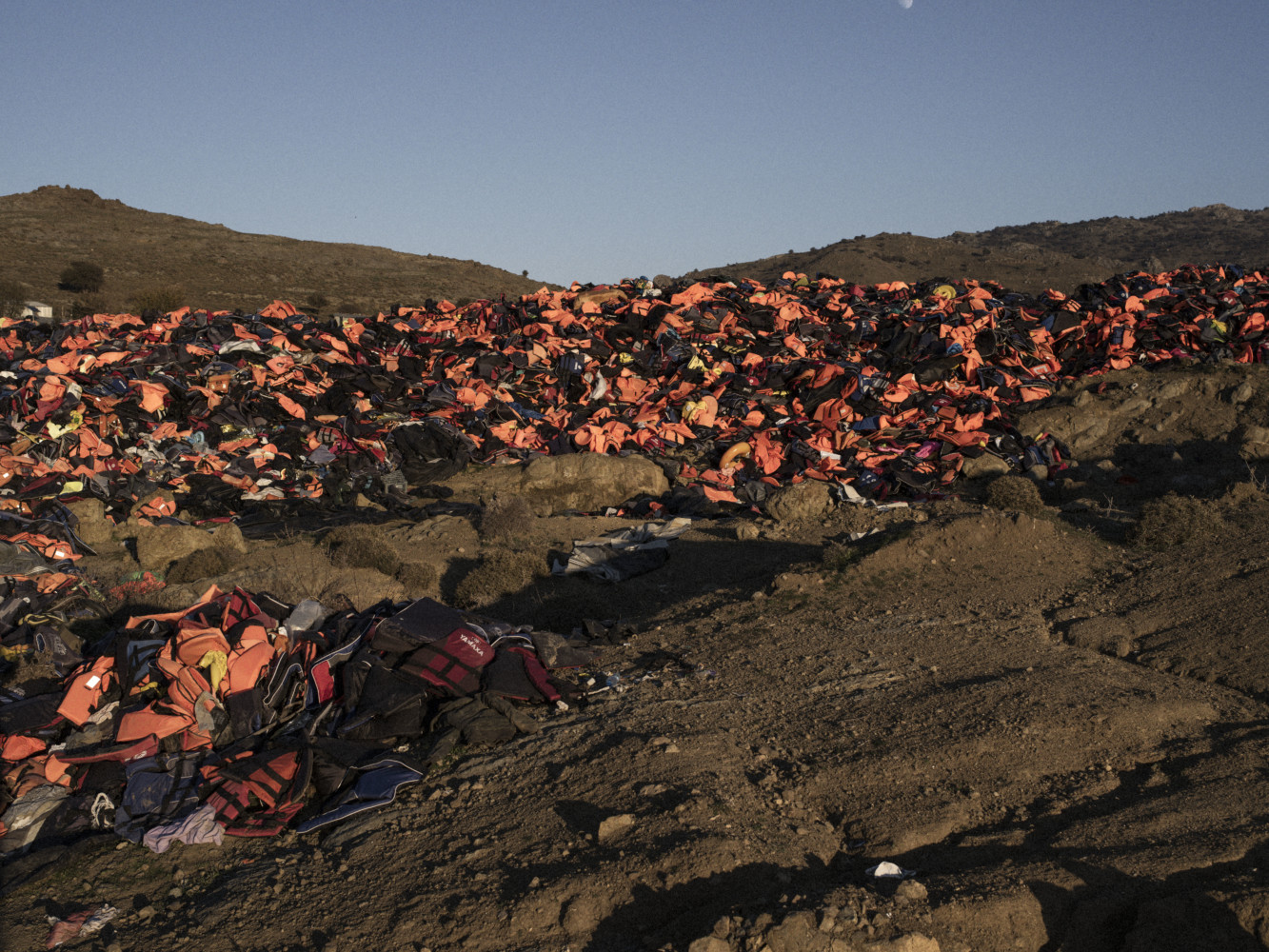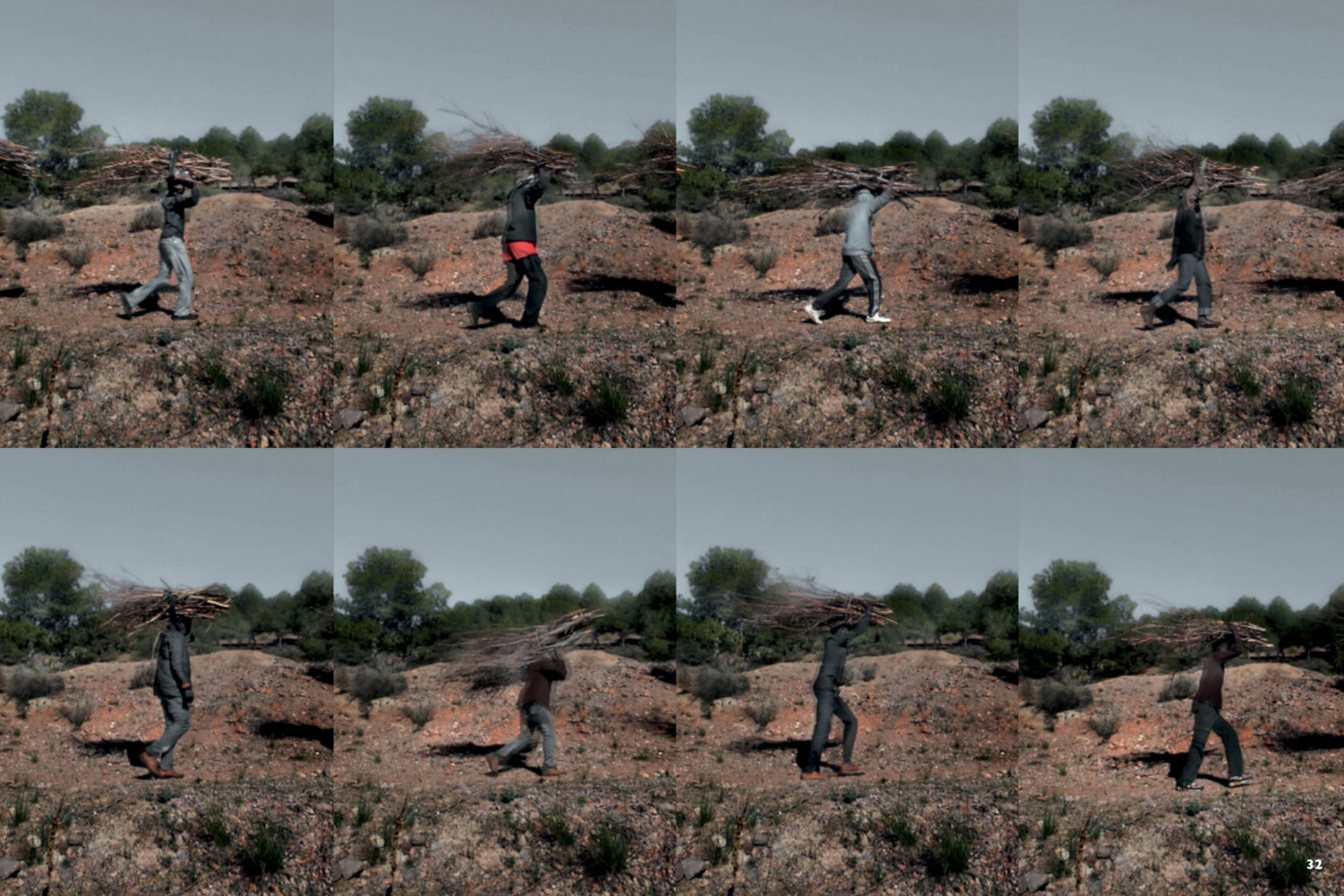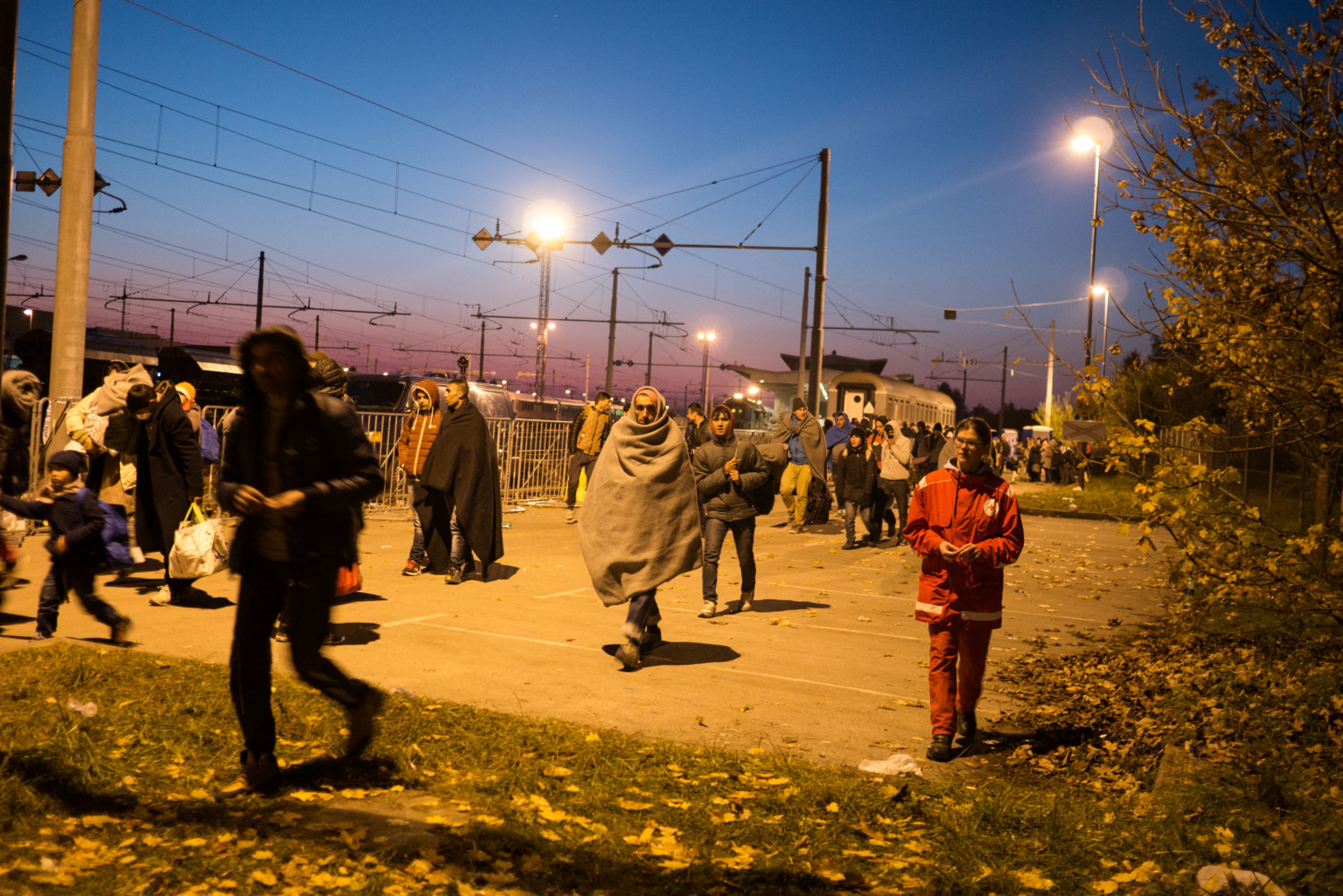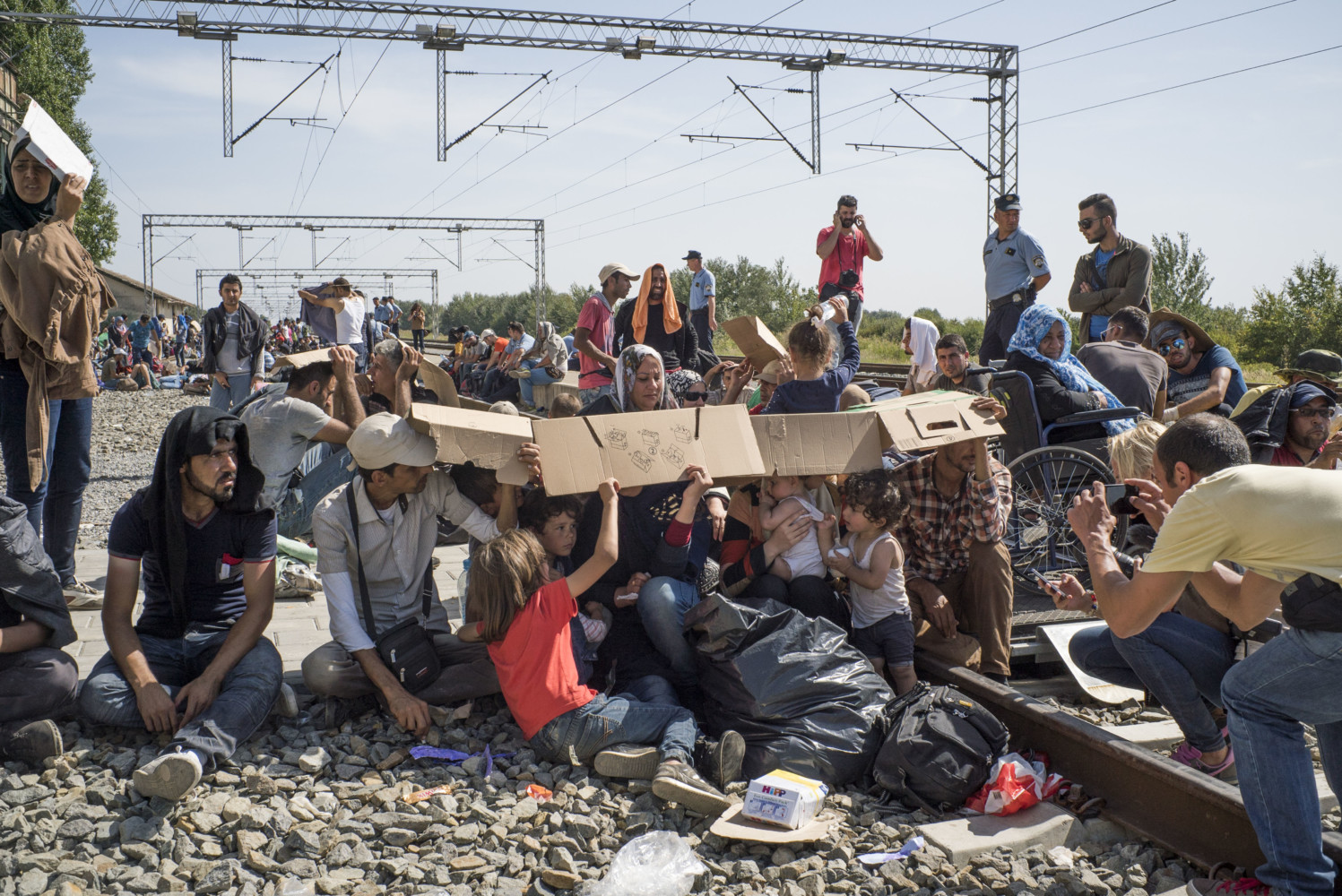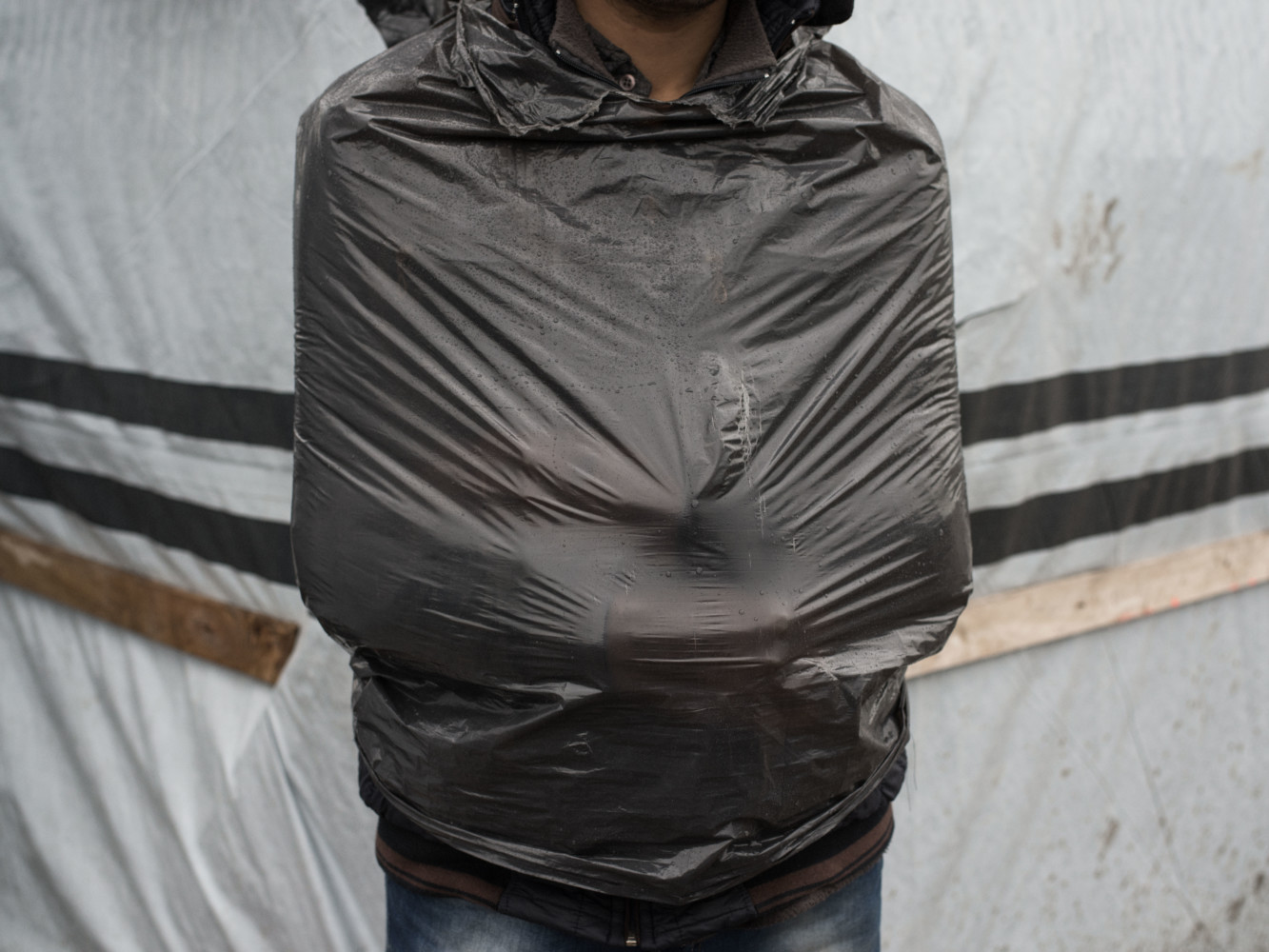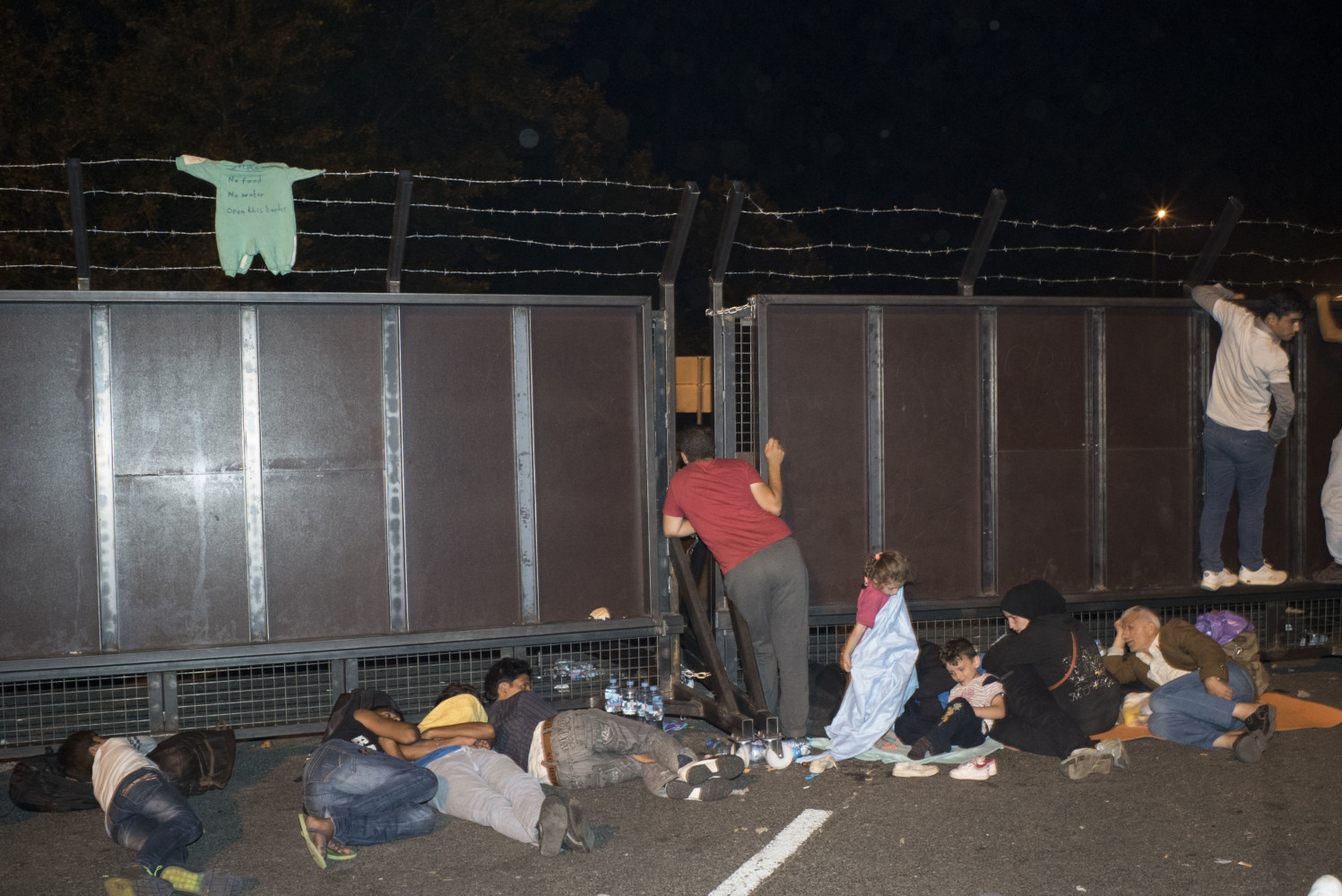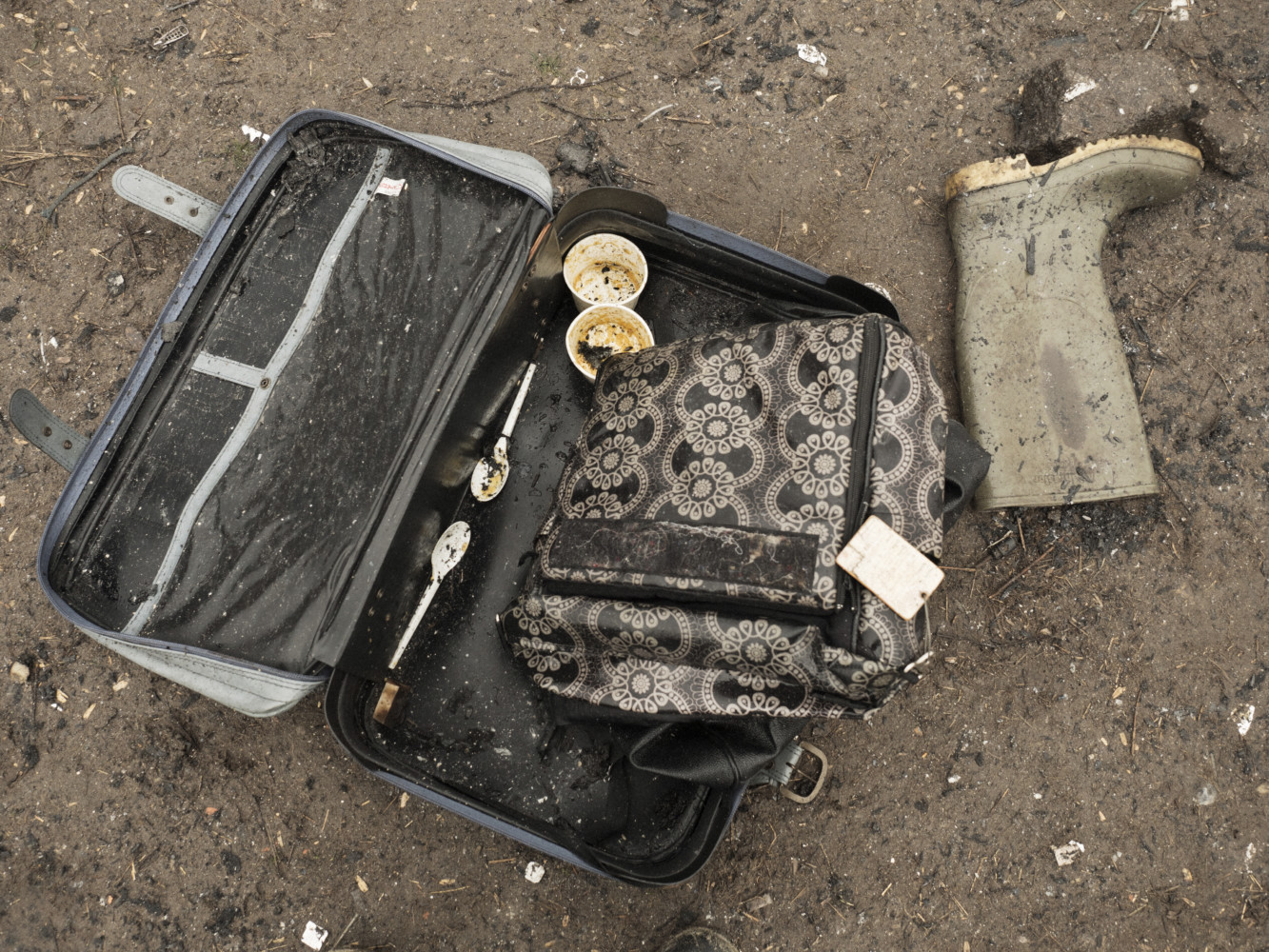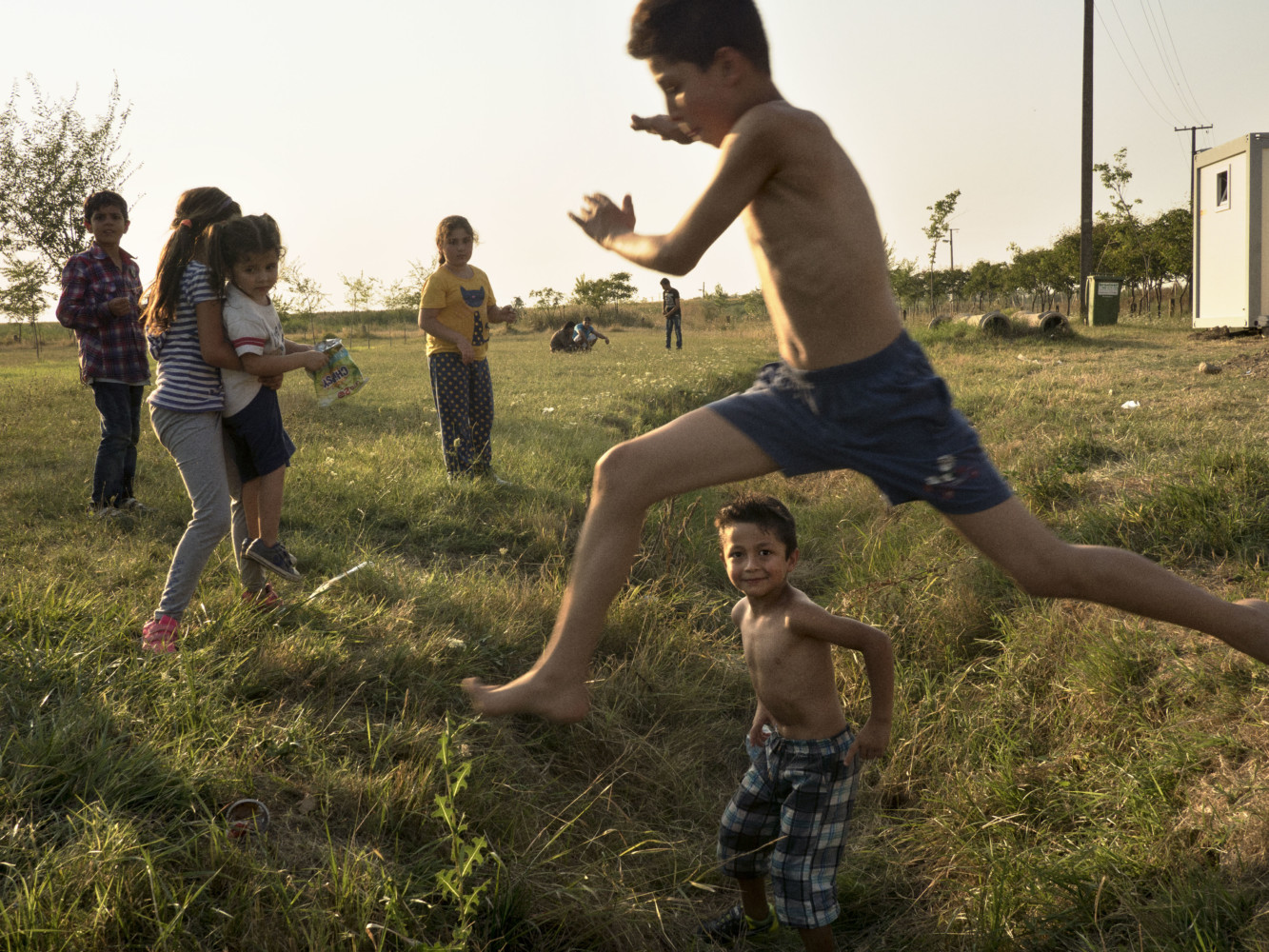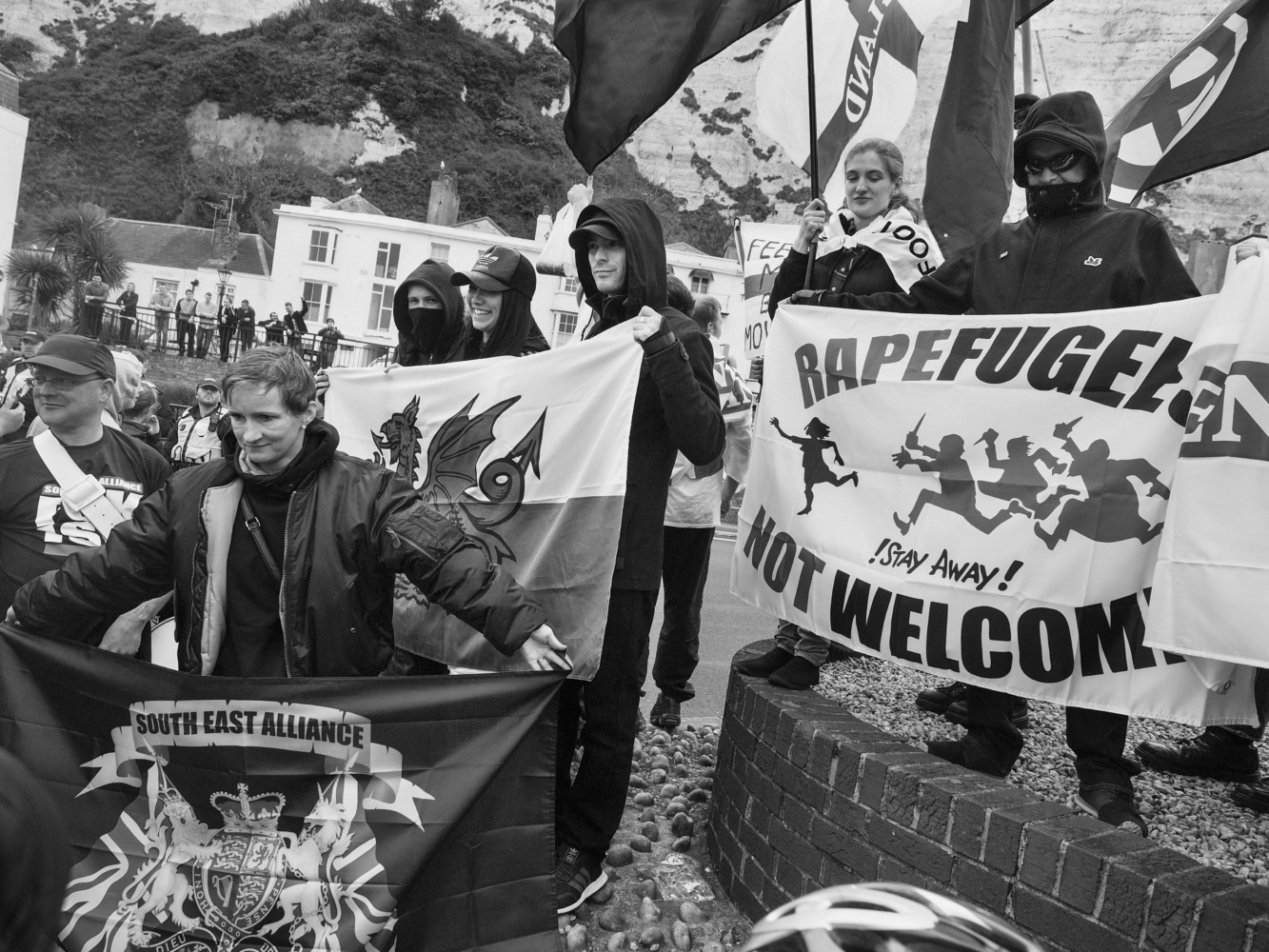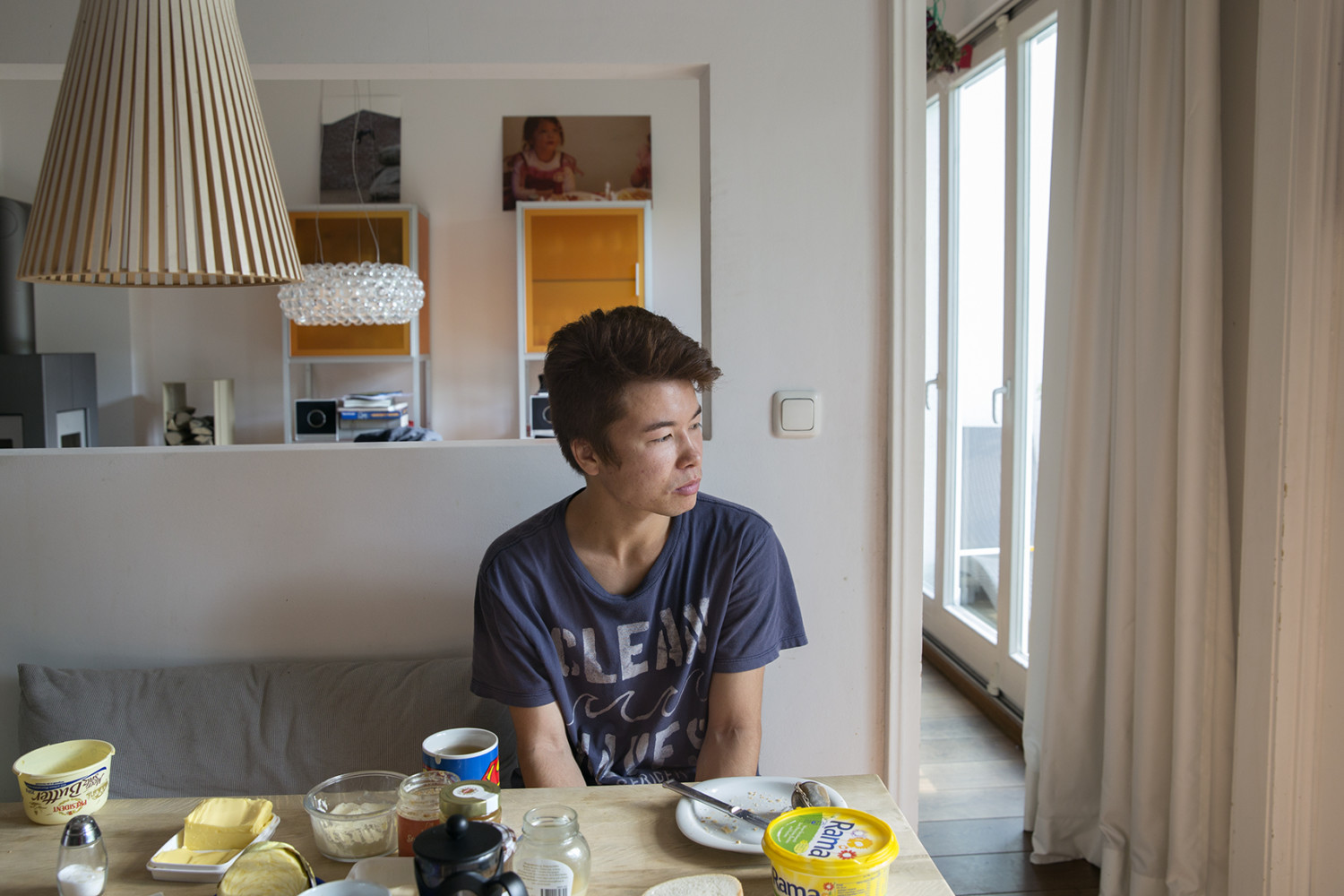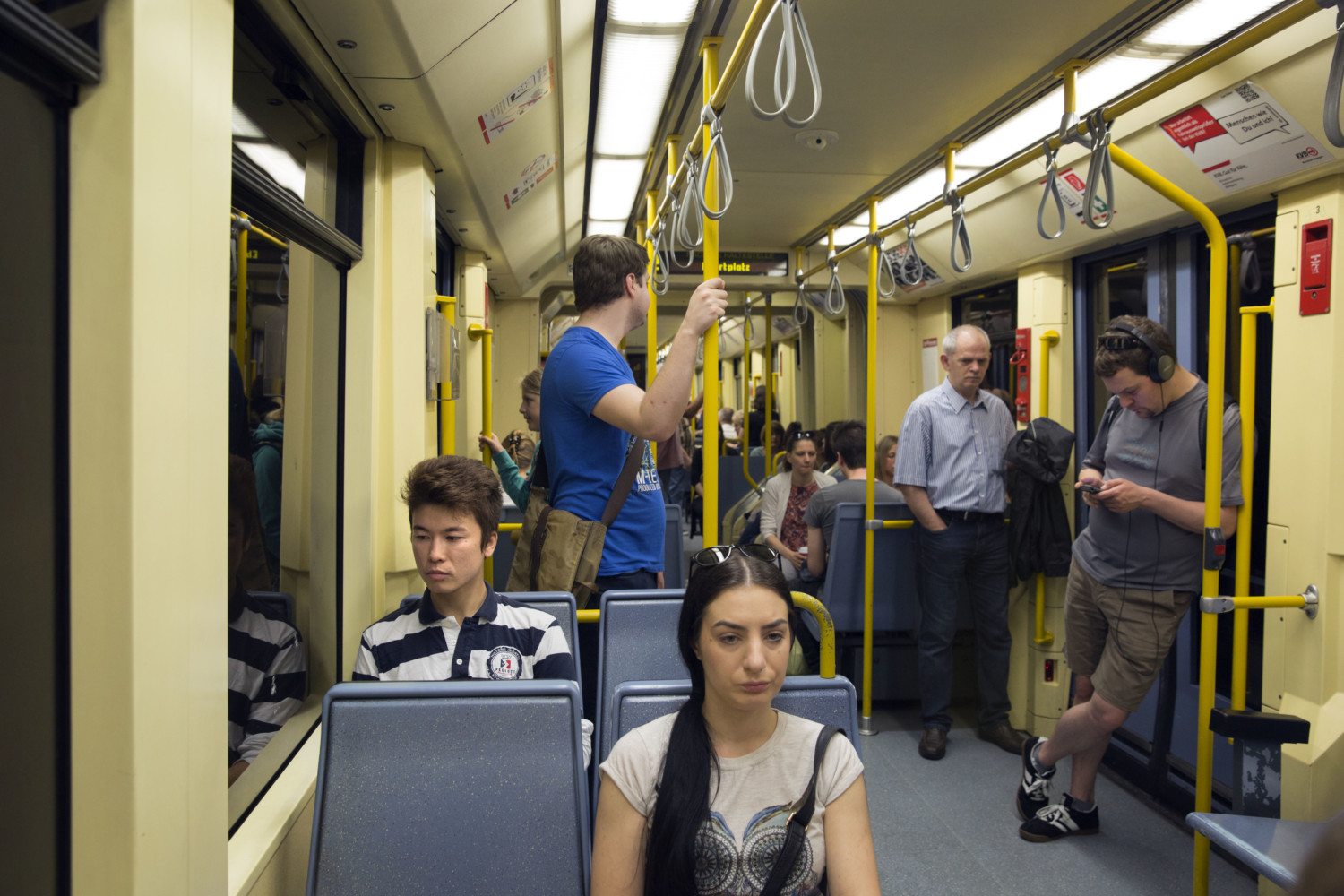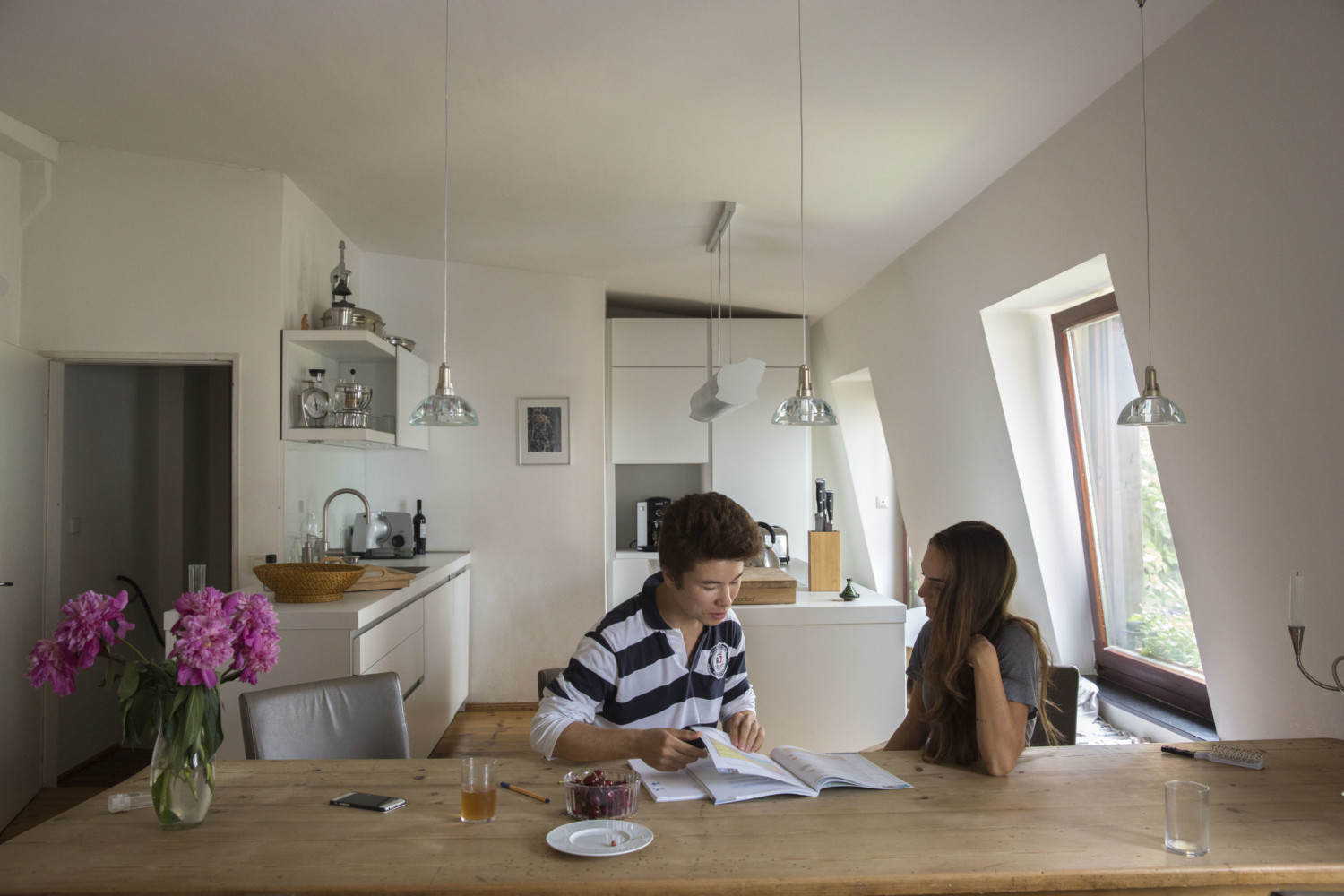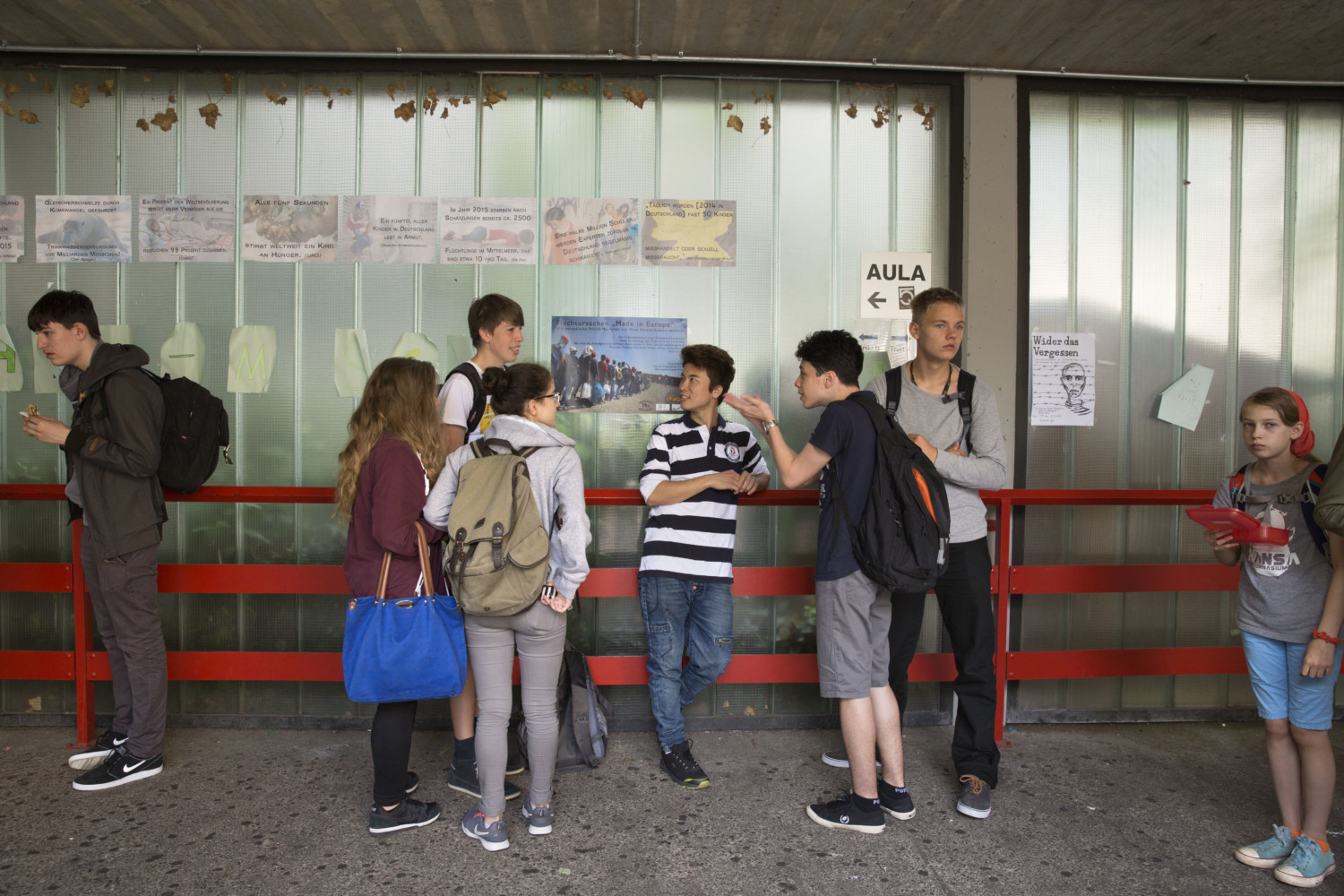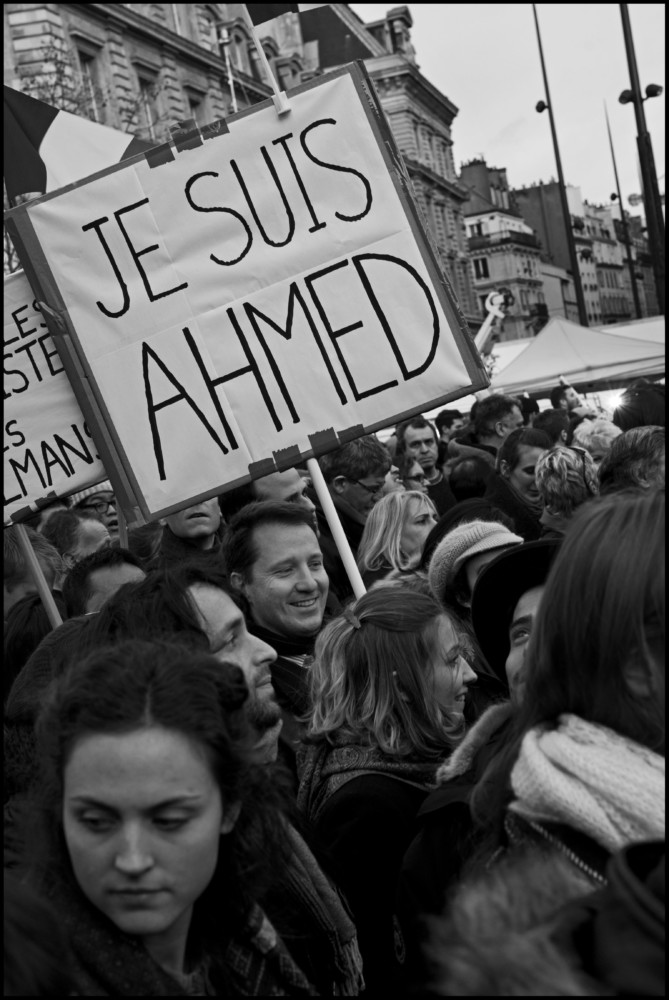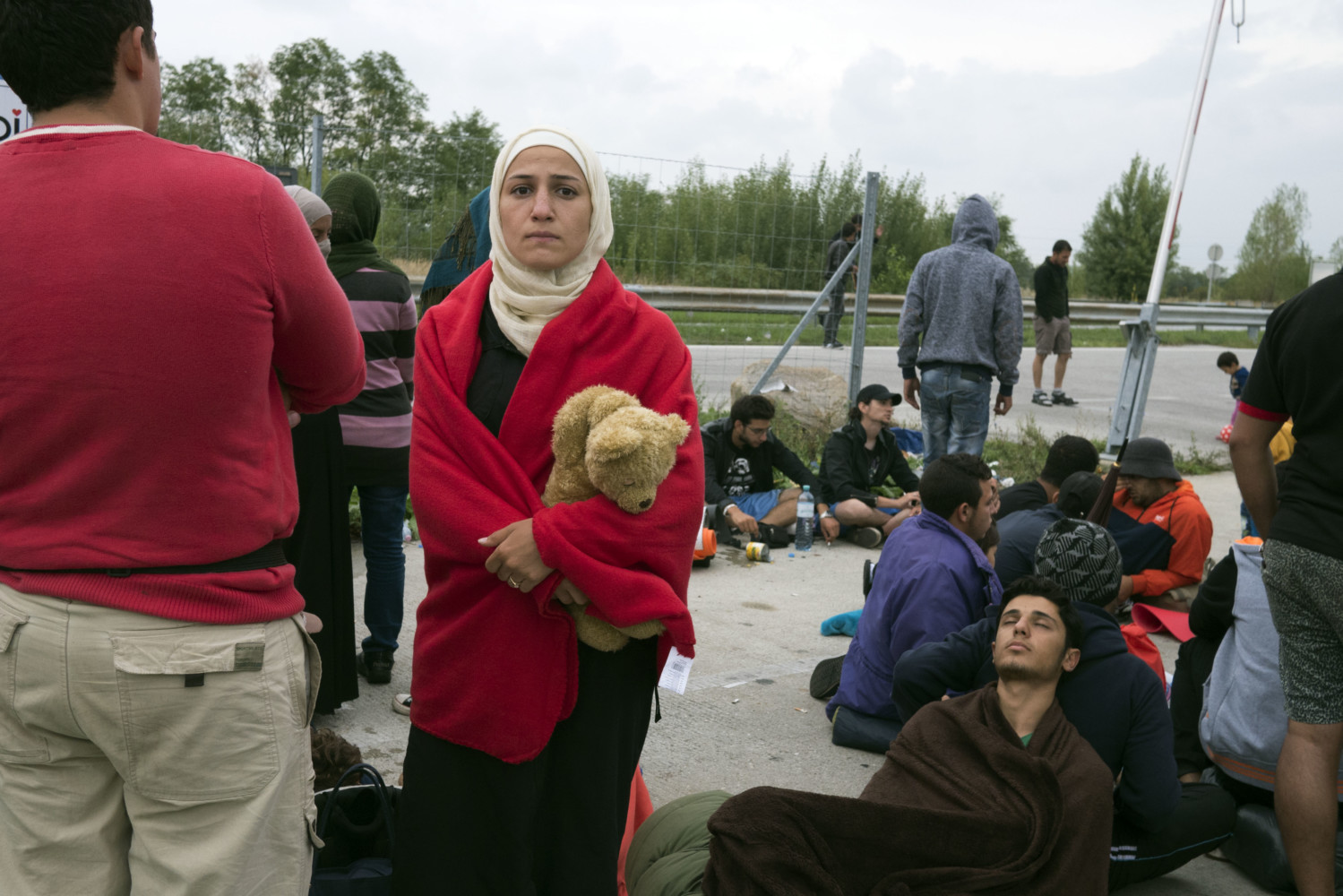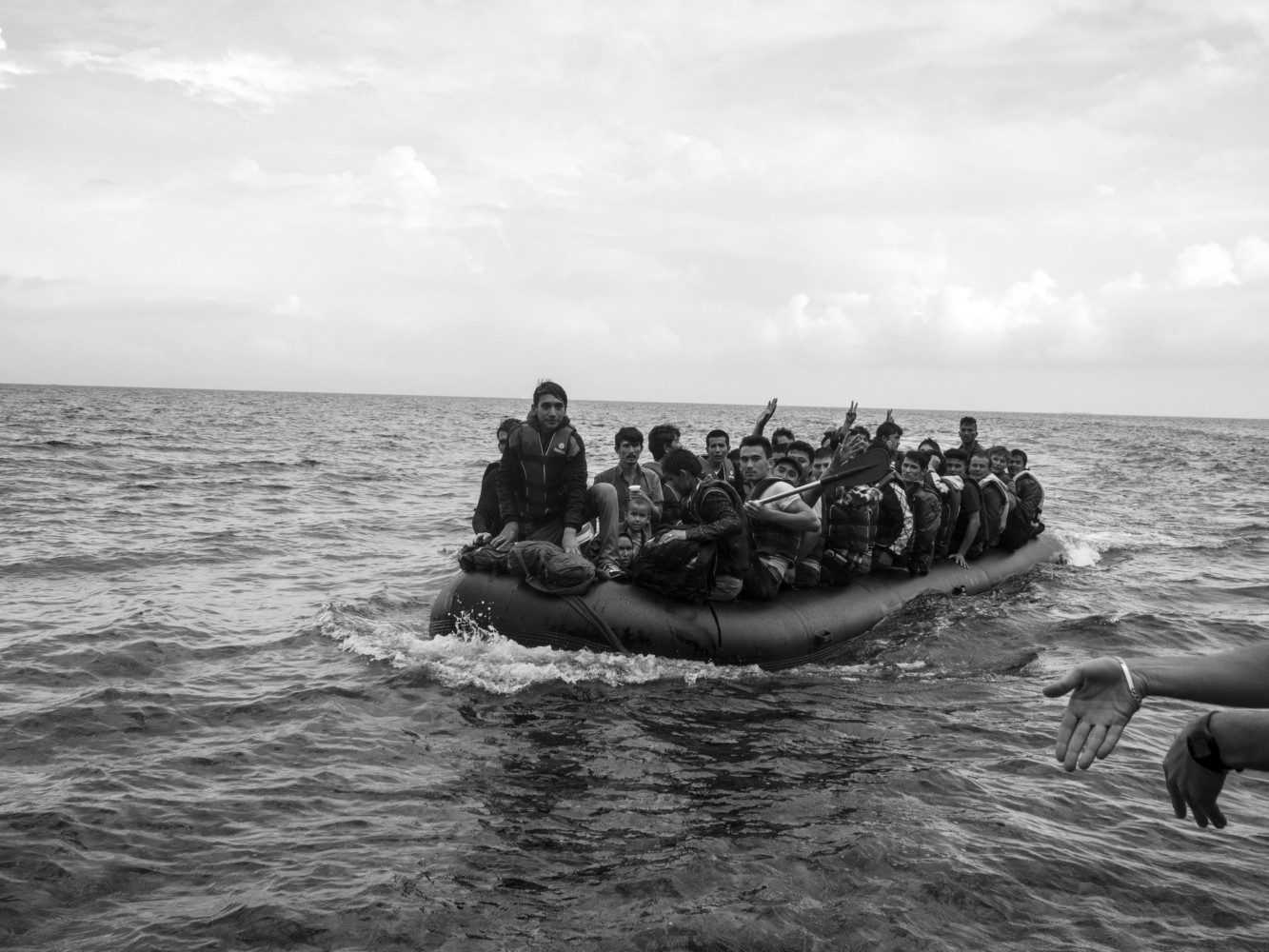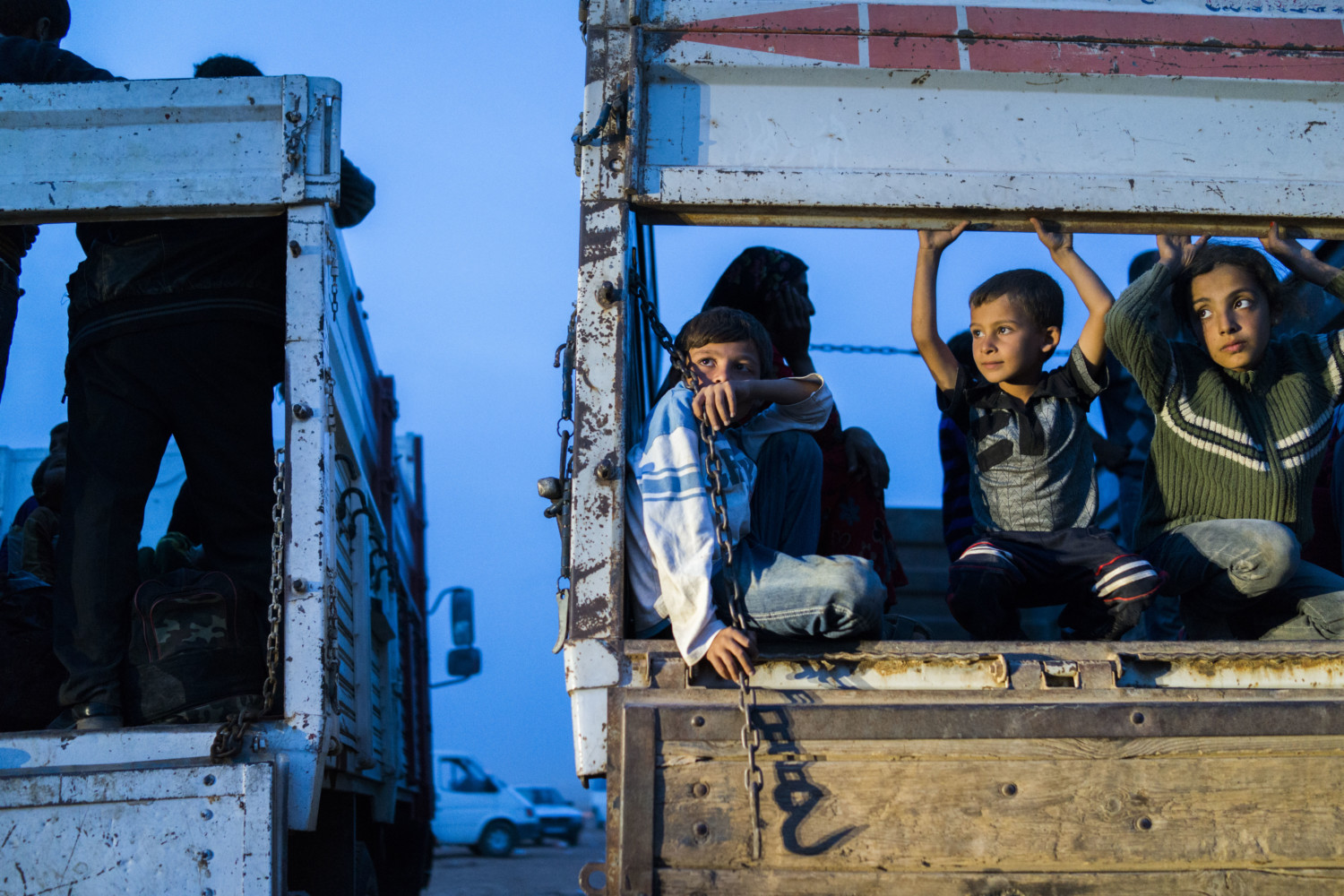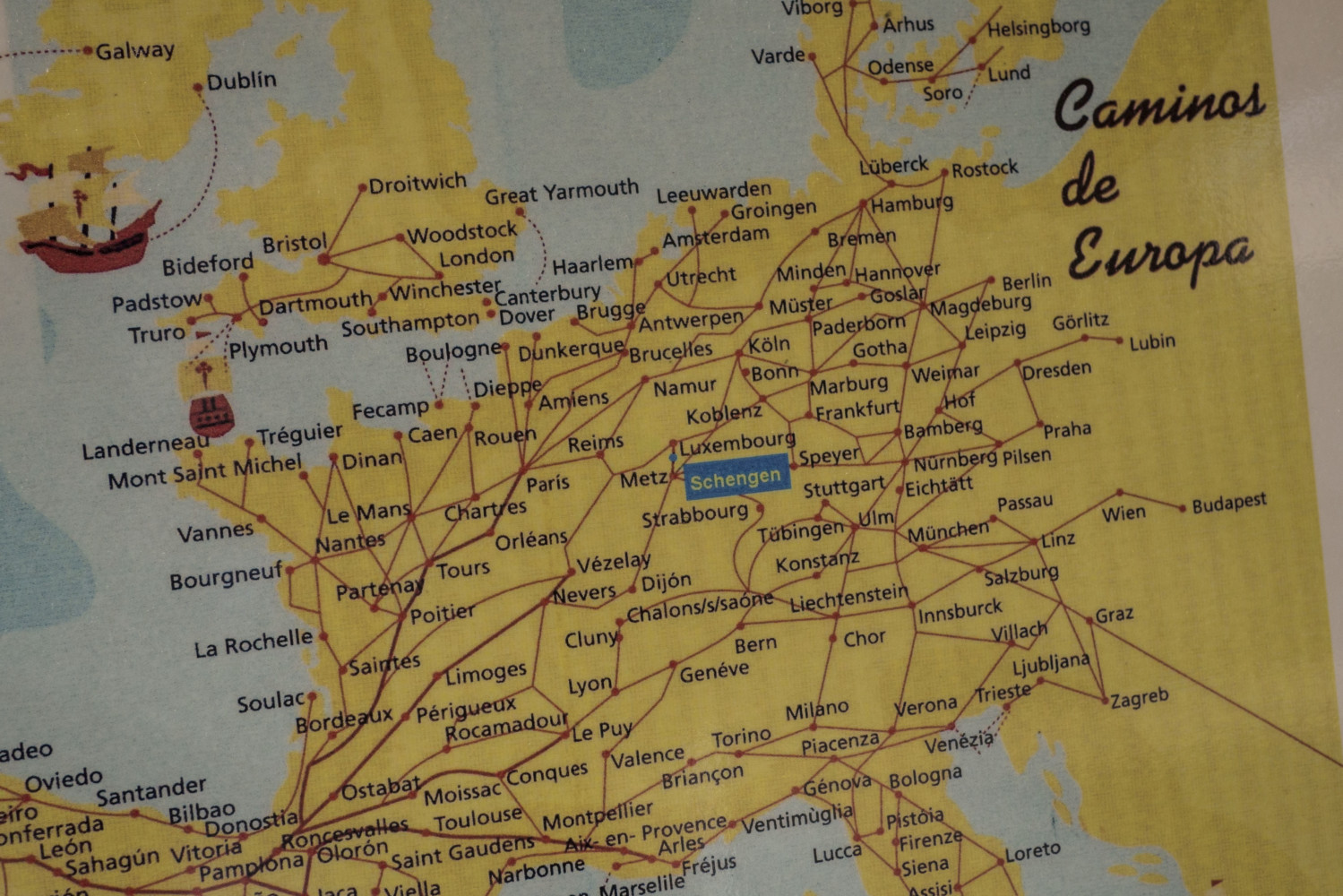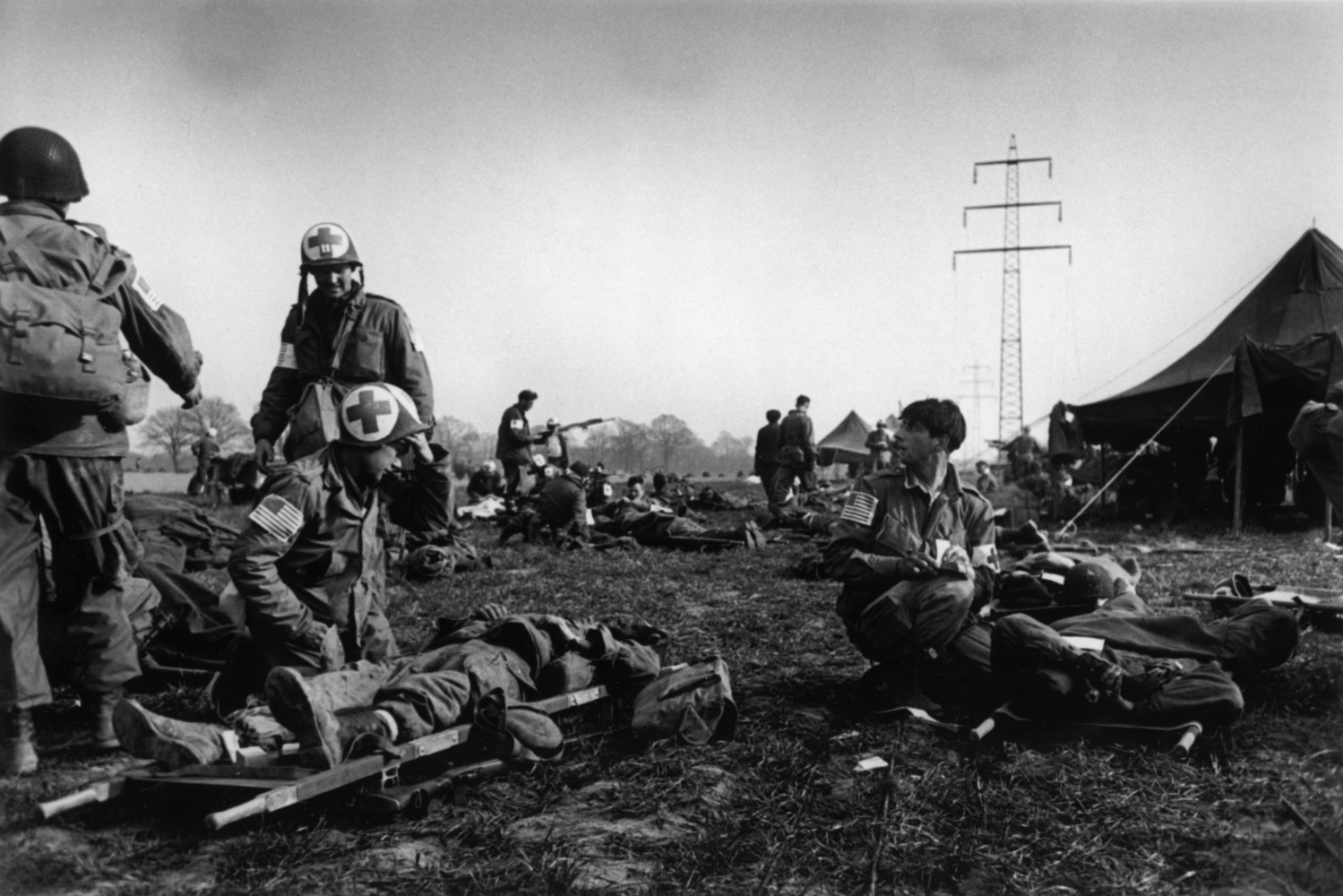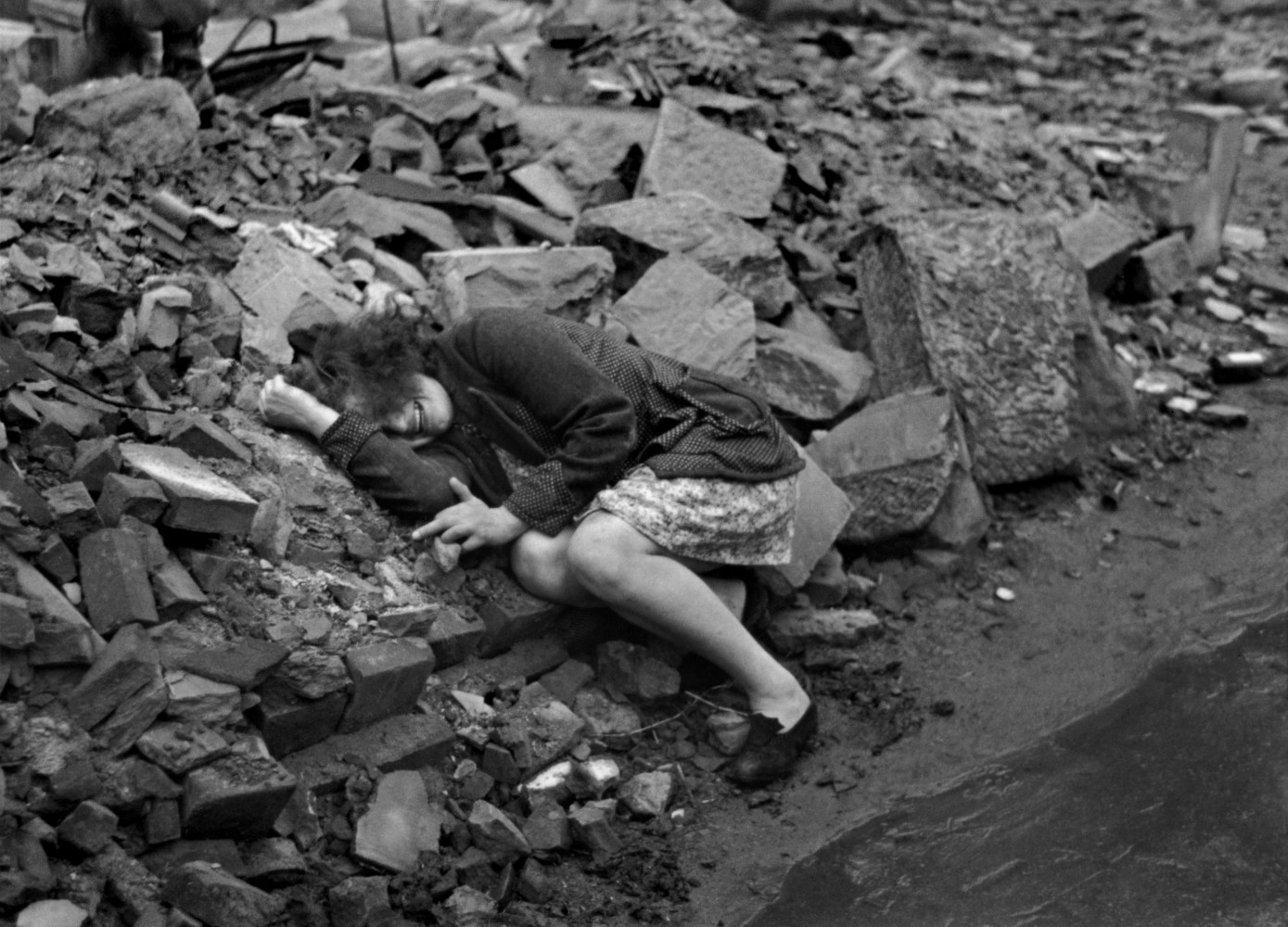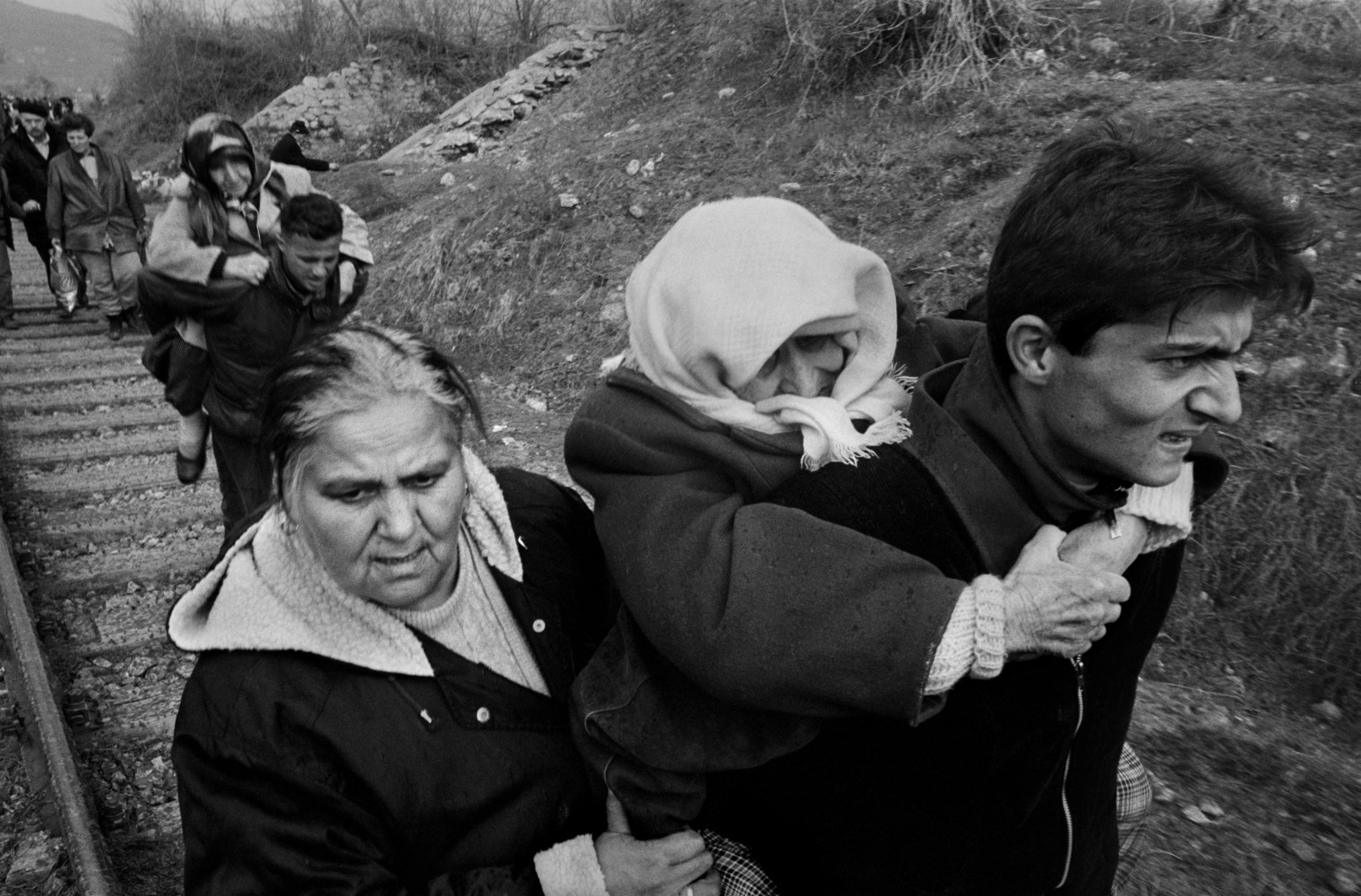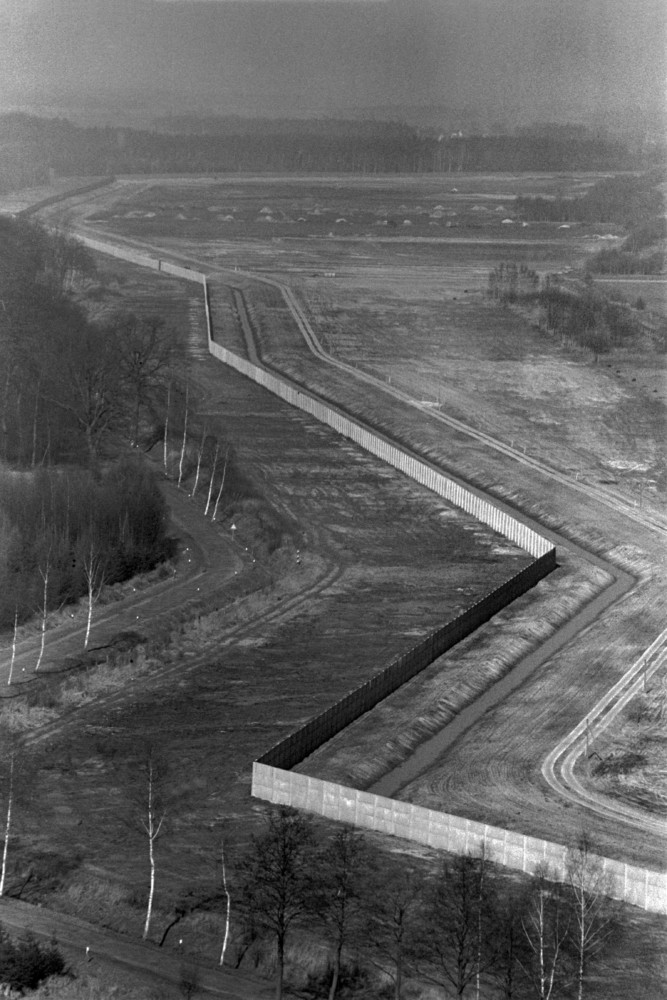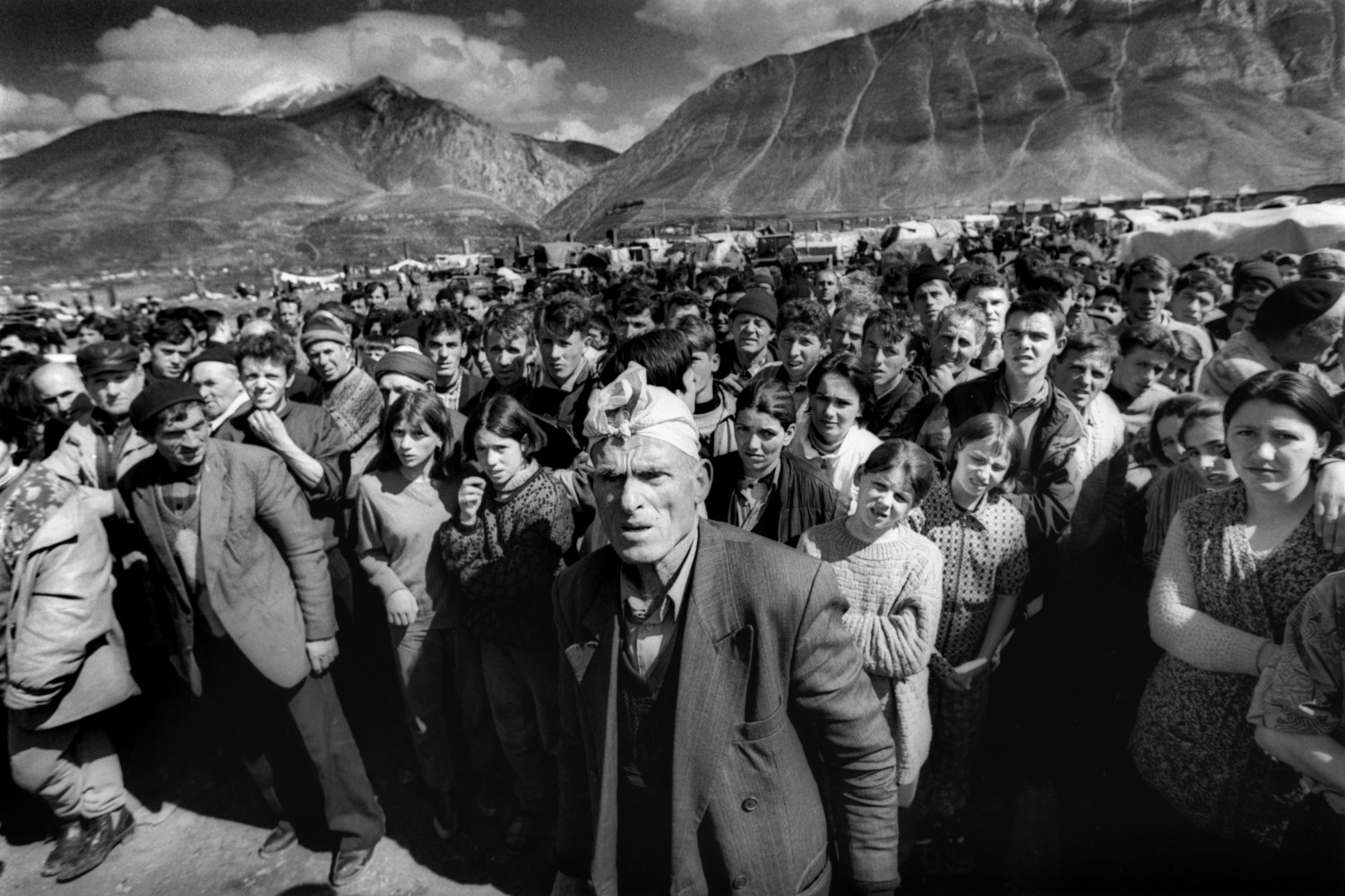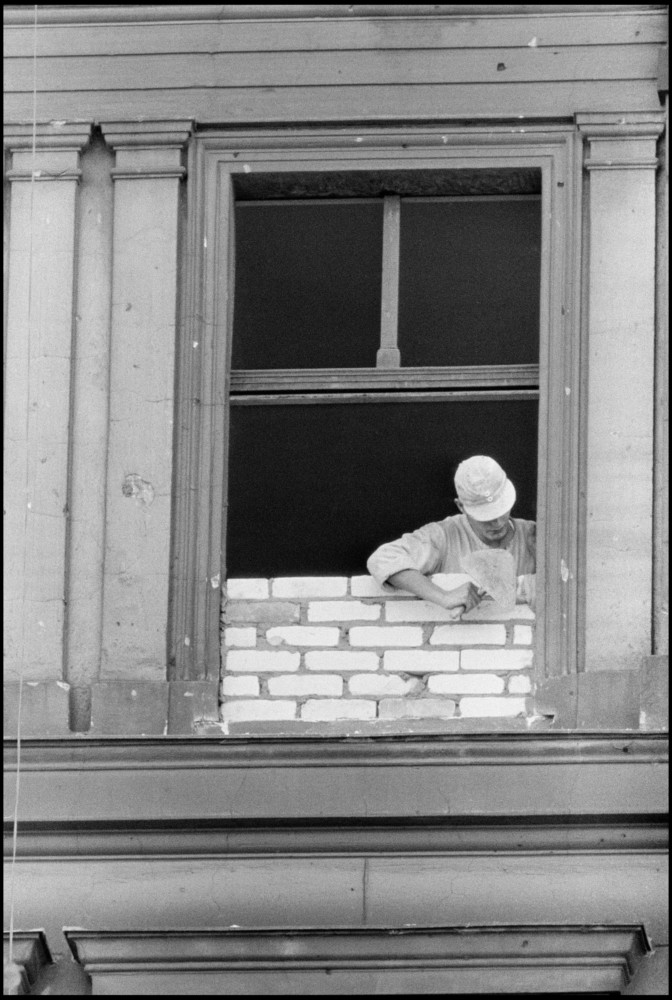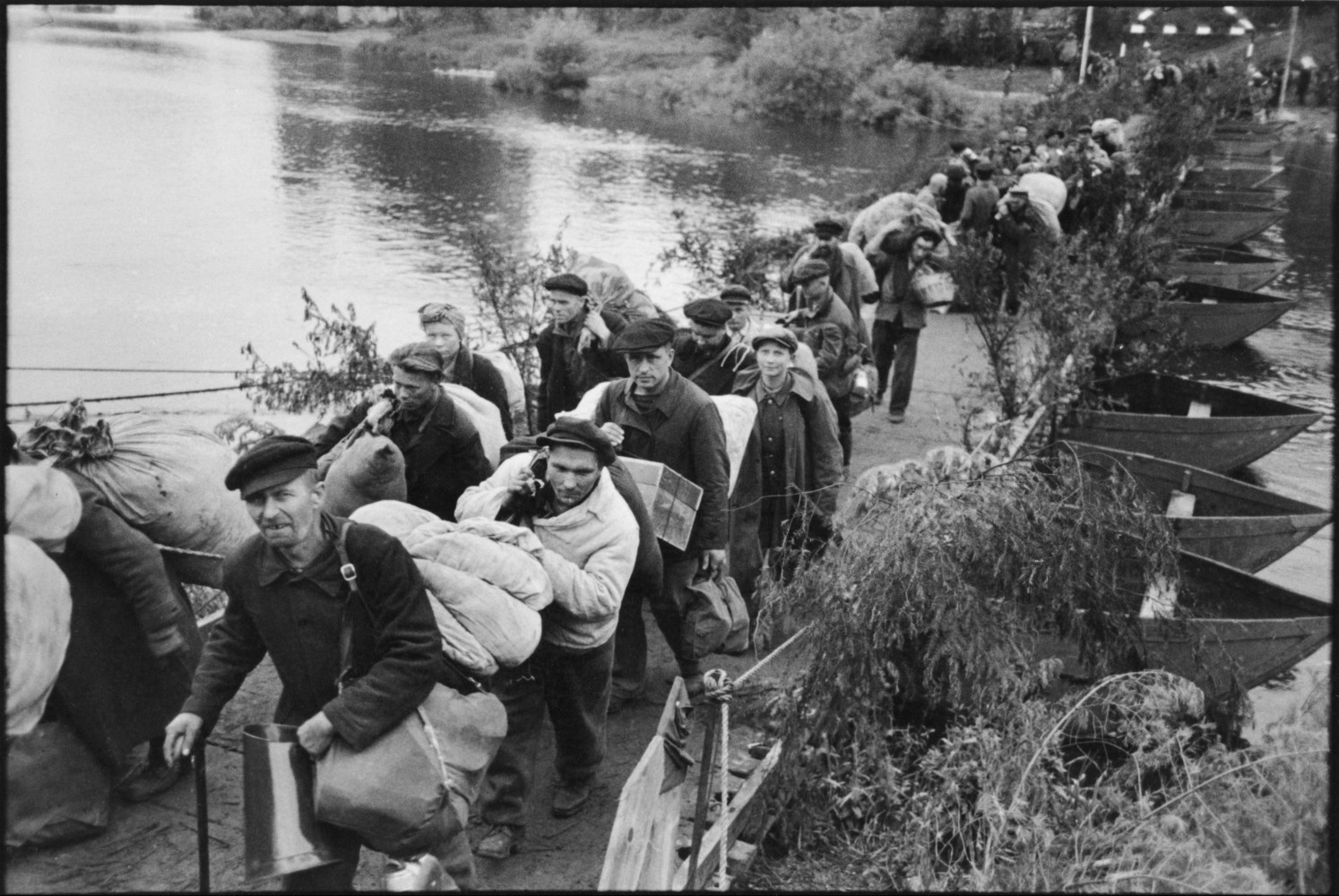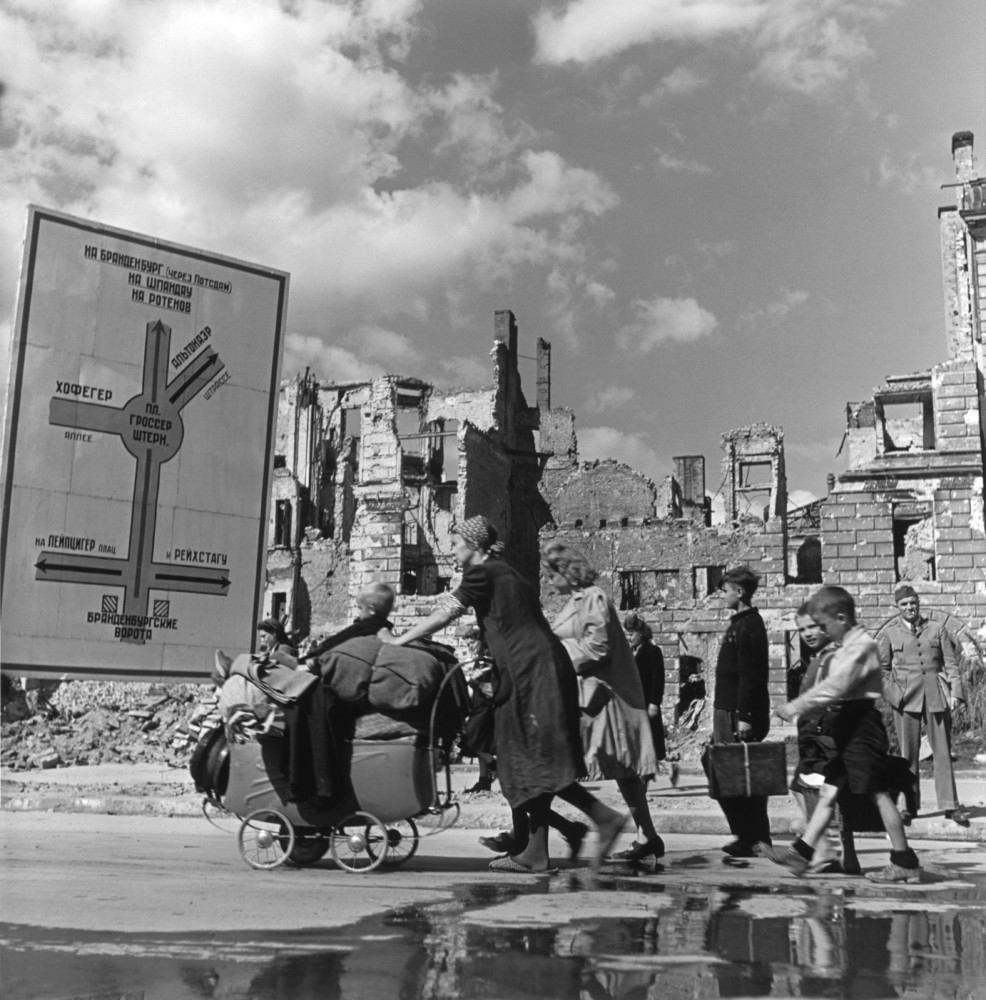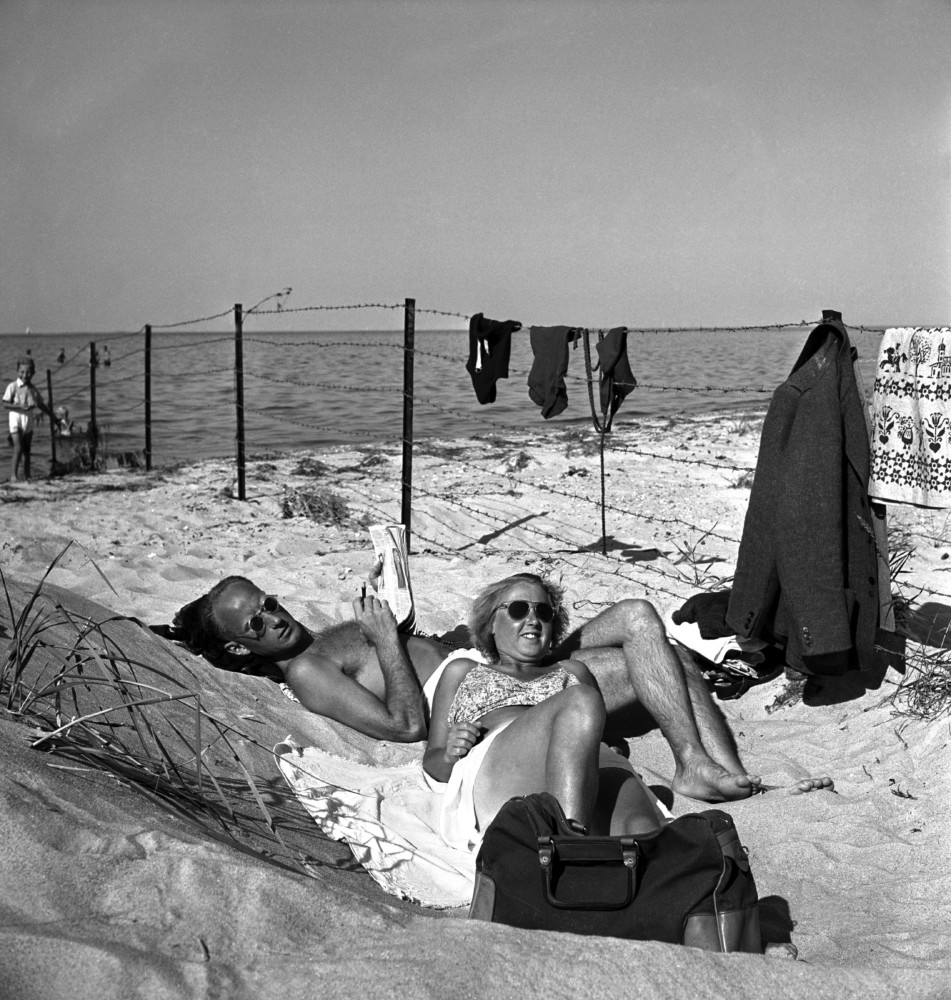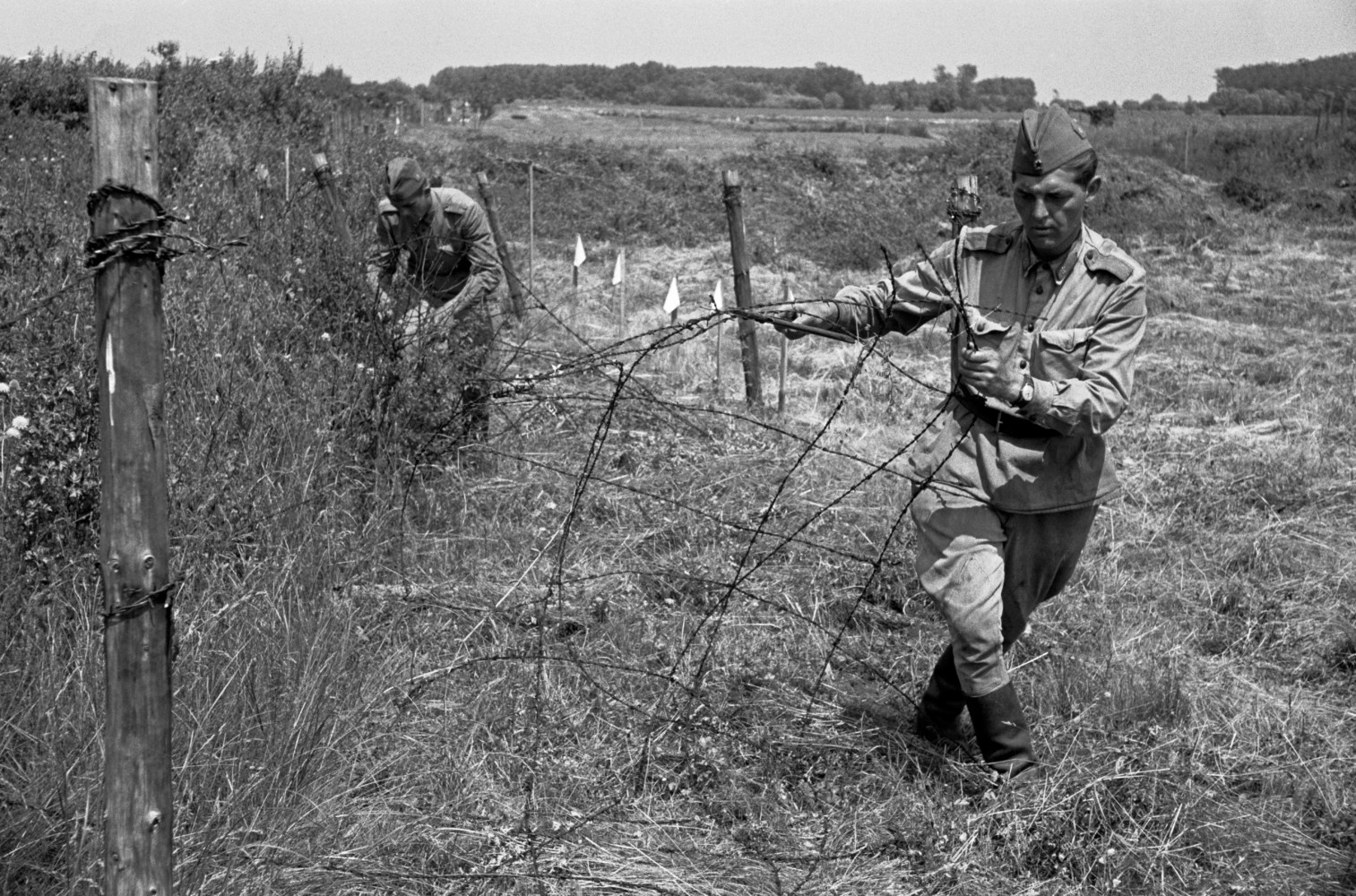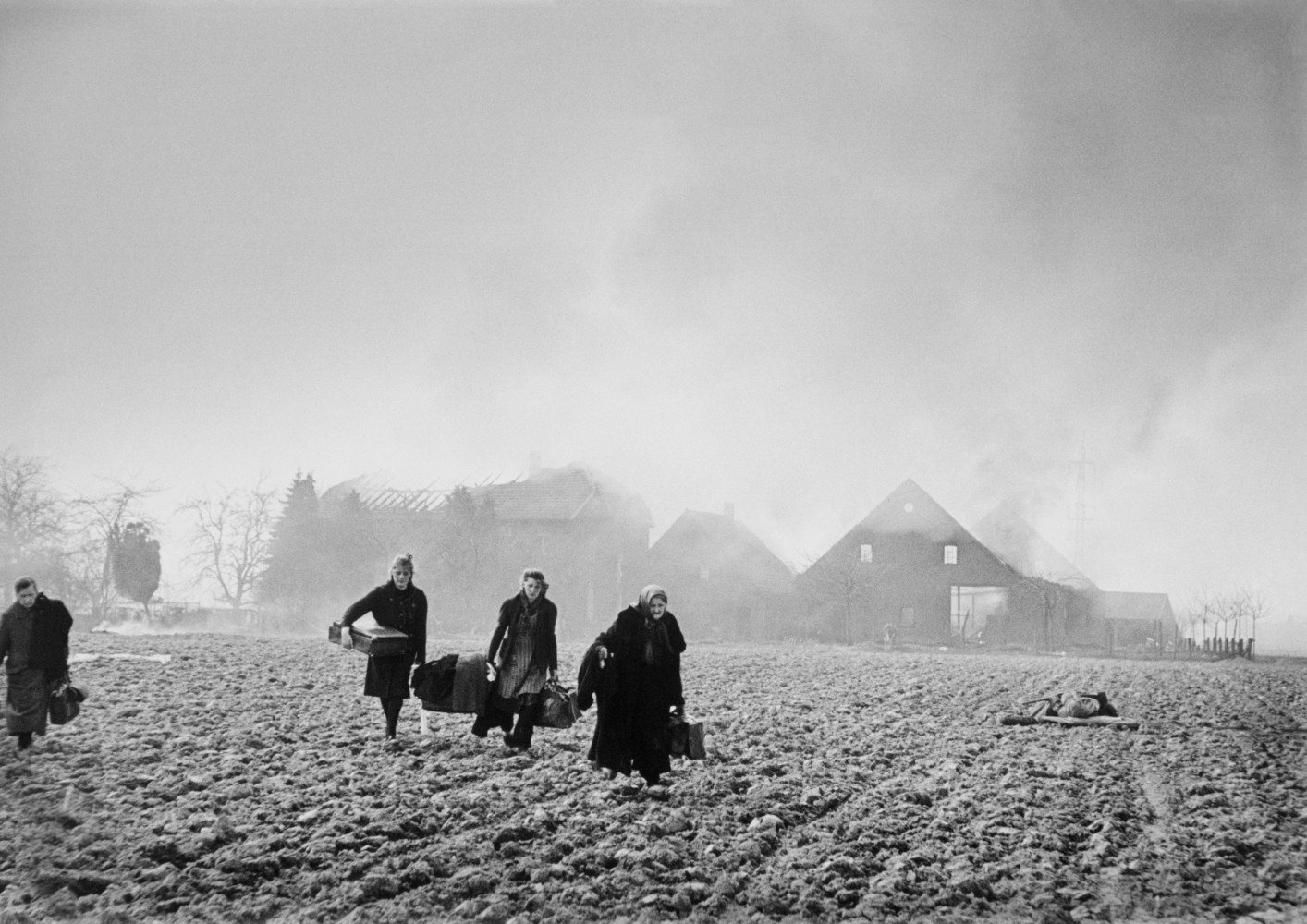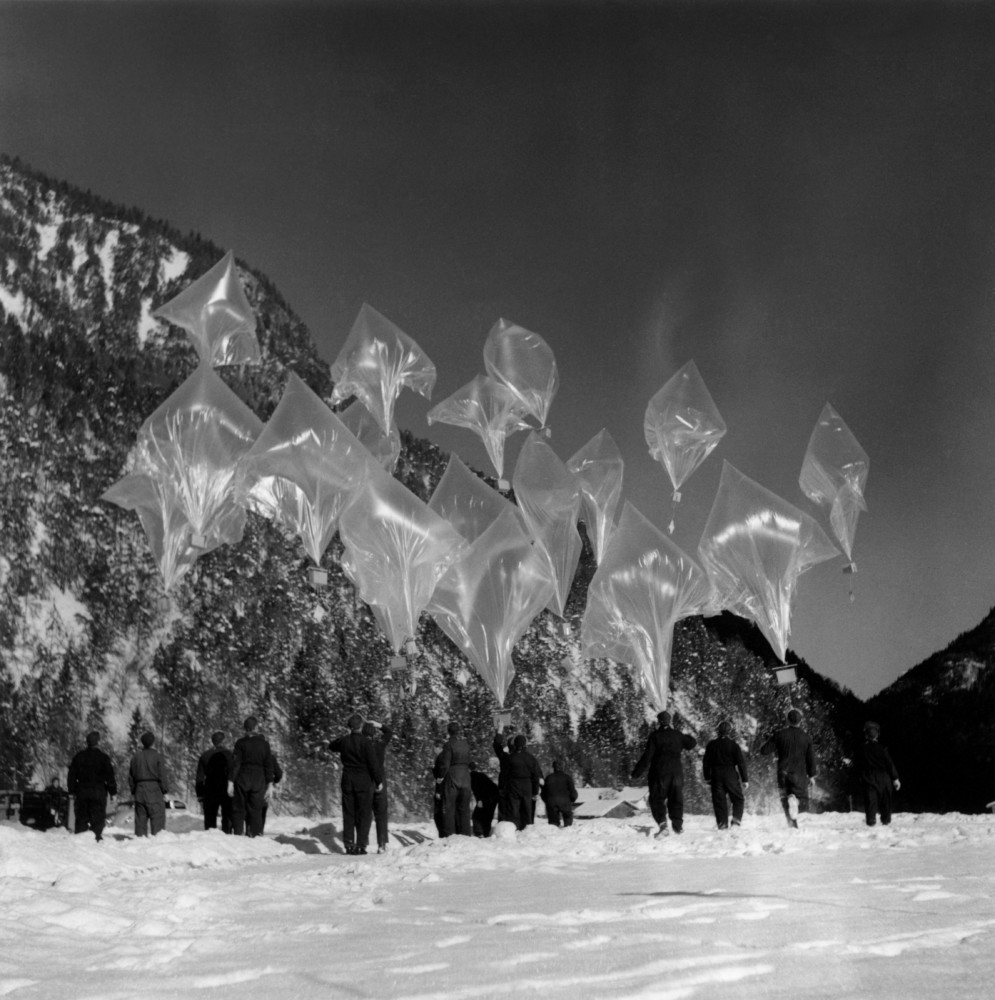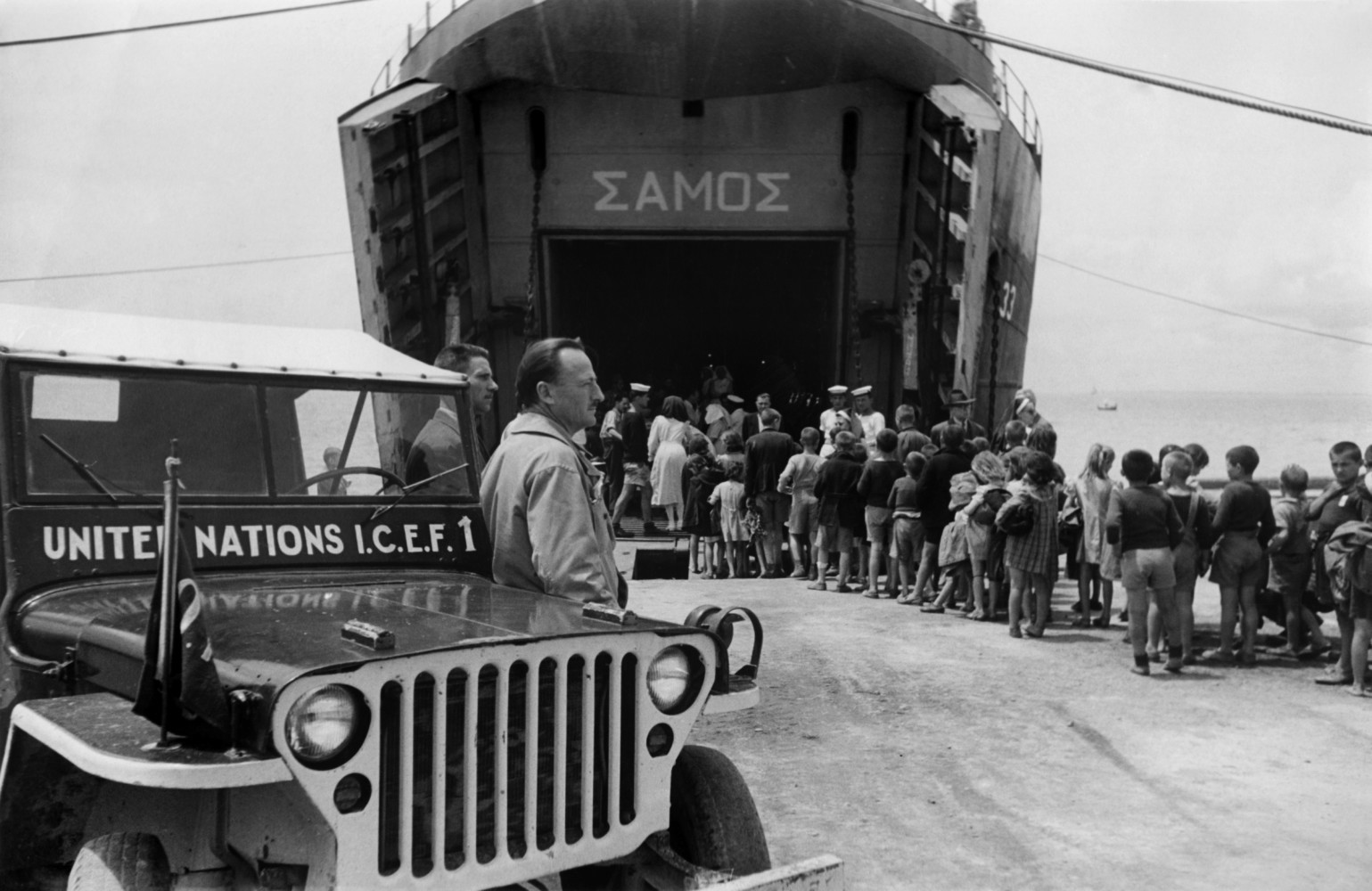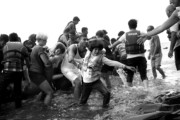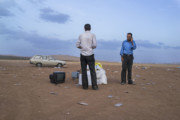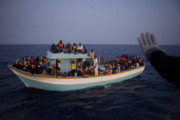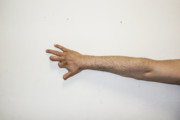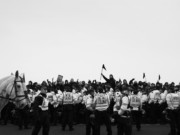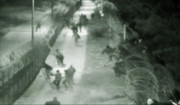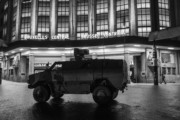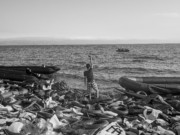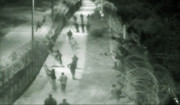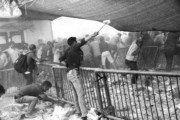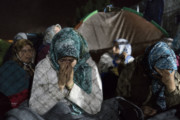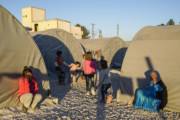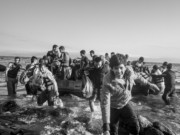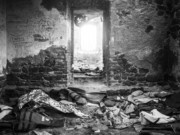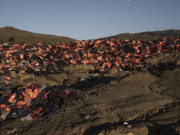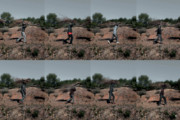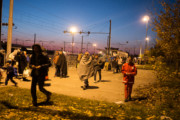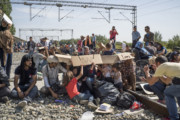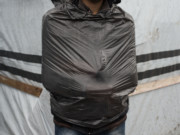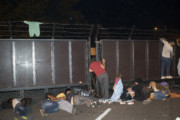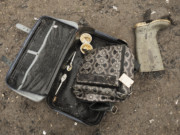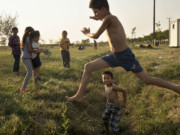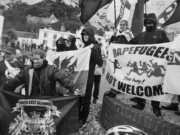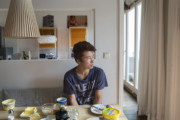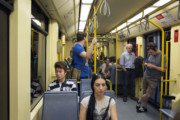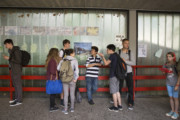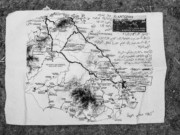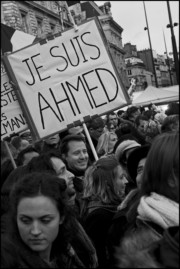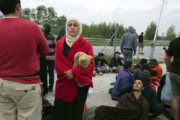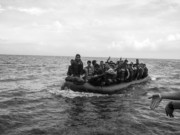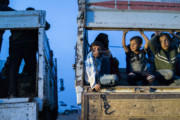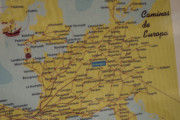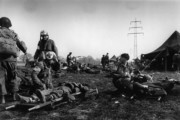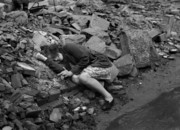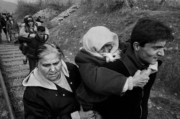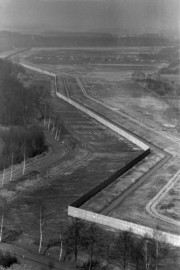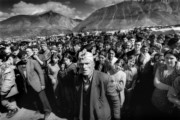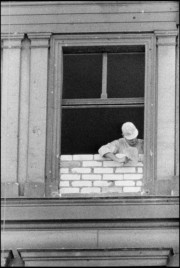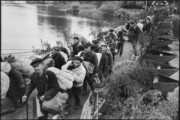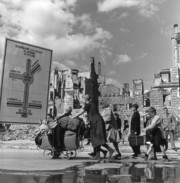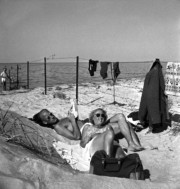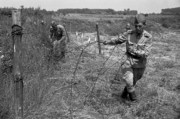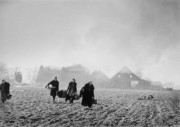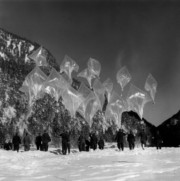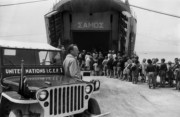Paolo Pellegrin Volunteers help refugees come ashore near the village of Skala Sikamineas, on the northern tip of the Greek island of Lesbos, after travelling on an inflatable raft from Turkey. After reaching the (...)
island, they have to walk for 55 kilometers in order to reach Mytilini. Once in the capital, they can start the registration process with the Greek authorities. The moment their registration is completed, they can board a ferry that will take them to the mainland. Since the very high numbers of arrivals, the registration process takes at least one week or more. During this time, the living conditions of the refugees are extremely difficult.
Thousands of refugees are coming into Lesbos every day during these final days of summer. Syrians make up roughly 70% of arrivals.
According to figures released by the UNHCR in July 2015, over 225,000 refugees and migrants have arrived by sea in the Mediterranean and around 2,100 are estimated to have died or gone missing while trying to reach Europe. Lesbos, Greece. August, 2015. © Paolo Pellegrin/Magnum Photos with support from the Pulitzer Center. © Paolo Pellegrin | Magnum Photos
Patrick Zachmann A boat coming from Libya has been spotted and caught by the coast guards (Costiera Guardia) 35 miles away from Lampedusa. They escort it to the port where coast-guards, police, Protezione Civile, a (...)
mbulances, buses, Red Cross and other NGOs are expecting the boat and the migrants. There are 158 persons, including 22 women and babies, and come from several African countries, including Somalia, Nigeria, Mali, Senegal, Burkina Faso, Sierra Leone, Niger, Tchad, Errythrea and Togo. Only some are political refugees. Most of them left their native countries for economic reasons and were trapped in Libya. They will all be, regardless of their countries of origins, very quickly sent away from Lampedusa to different parts of Italy, where they will be able to stay for six months. A few of them will go back to their country and others will continue their epic trip to France, Holland, Germany, Denmark or Sweden. The whole operation of disembarkation, counting of the migrants and transfer into buses is extremely well organized and quickly done. A person in charge tells the photographer, "Have you seen how fast we operate from their boat to the buses? Then, tourists don't see them." Lampedusa, Italy. July 2011. July 8, 2011. © Patrick Zachmann | Magnum Photos
Peter van Agtmael The hand of Ashgar Hassanzadeh, 34, an Afghan refugee who had three fingers chopped off and 22 bones broken by the Taliban threatening him for working with coalition forces. He fled with his family (...)
to Europe and was detained in Bavaria. They are now in a refugee camp in Wurzburg, Bavaria. It is the largest camp in Bavaria and refugees usually spend years there before their status is resolved and they are granted residency, or they are deported back to their home country. The refugees are housed in a barracks from the Nazi era and receive a small subsidy from the German government. There is widespread frustration and depression in the camp, including a recent suicide by an Iranian refugee and a hunger strike by another group. Wurzburg, Germany. 2013. © Peter van Agtmael | Magnum Photos
Jérôme Sessini An anti-fascist group has been stop by police to avoid any confrontation with the South East Alliance protesters.
South East Alliance, and English Volunteer Forces organised the march to protest (...)
against European immigration policy. Dover, United Kingdom. April 2, 2016. © Jérôme Sessini | Magnum Photos
John Vink An army truck is stationed in front of the Central Station. Following the terrorist attacks in Paris on Friday 13, 2015, and the connection with radicalised Muslims from the borough of Molenbeek, a (...)
level 4 alert (the highest) was announced in Brussels, with the closure of the subway, shopping malls, cinemas, leaving the center of the city empty on a usually busy Saturday night. Brussels, Belgium. November 21, 2015 © John Vink | Magnum Photos
Moises Saman A refugee waves to indicate a safe landing area to an approaching inflatable raft as it approaches the shores of Lesbos island in Greece. The passengers had traveled from Assos, Turkey, in inflatab (...)
le rafts to reach the European Union in the hopes of being granted asylum. Lesbos, Greece. September 29, 2015. © Moises Saman | Magnum Photos
Paolo Pellegrin Clashes erupt between Syrian and Afghan refugees in the Mytilini port area as they wait to be registered by the Greek police. The Afghans complain that the Syrian receive favored treatment by the a (...)
uthorities. In early September 2015, an estimated 15,000 to 20,000 refugees, of whom roughly 70% are Syrians, wait to complete their registration with the authorities in Mytilini, the capital city of the Greek island of Lesbos. For most the living conditions are miserable: sleeping on the ground, no access to toilets and extreme temperatures. The Greek authorities have been overwhelmed by the number of refugees and as a result of this, the registration process has slowed down enormously. It takes 7 to 10 days for refugees to get the document ready that will allow them to buy a ferry ticket and be transferred to the mainland. From there, the majority will continue towards the north, to the Macedonian border. Afterwards, they will continue their journey towards western Europe. Lesbos, Greece. 2015 © Paolo Pellegrin | Magnum Photos
Peter van Agtmael The train station on the Croatian-Serbian border. It was over 100 degrees fahrenheit and thousands of migrants waited for trains to take them to Zagreb, while Croatian riot police kept them fenced (...)
in. A promised train never materialized and after hours of waiting in the baking sun without food or water a surging crowd crashed through the police lines. They spent the rest of the day seeking shade in a field and in the shadow of farm silos. By evening buses began taking them to Zagreb. Tovarnik, Croatia. September 17, 2015. © Peter van Agtmael | Magnum Photos
Jérôme Sessini A migrant protects himself from the rain with a garbage bag. The migrants who live in the 'Jungle' of Calais are a mix of refugees, asylum seekers and economic migrants from Darfur, Afghanistan, Sy (...)
ria, Iraq and Eritrea. The Calais jungle is the name given to the the shantytown near Calais city, where migrants live while they attempt to enter the United Kingdom by stowing away on ferries, cars, or trains travelling through the Port of Calais or the Eurotunnel Calais Terminal. About 5000 migrants are living in the Jungle of Calais. Calais, France. November 24, 2015. © Jérôme Sessini | Magnum Photos
Peter van Agtmael The closed Serbian-Hungarian border. The border had closed at midnight earlier that day, but thousands of migrants, unaware of an alternative route, hoped that it would be opened. At the border fen (...)
ce thousands of migrants set up tents and demonstrated into the night while Hungarian police stood guard on the other side and shined their flashlights at the cameras of photographers attempting to photograph them. It quickly became clear that it wouldn't reopen and the next morning most of the refugees began to move towards Croatia. There were clashes the next day at the border, and Hungarian riot police tear gassed dozens of migrants. Horgos, Serbia. September 15, 2015. © Peter van Agtmael | Magnum Photos
Jérôme Sessini Syrian families, mostly from Aleppo, are placed in a refugee camp in Vasariste near the Serbian-Hungarian border. After a day to recover, they will walk and attempt to cross the Serbian-Hungarian (...)
border. The migrants, mostly from the Middle East, but also from as far as Afghanistan, are aiming to get to Serbia, the last country that stands between them and a European Union member state, Hungary. Vasariste, Serbia. August 12, 2015. © Jérôme Sessini | Magnum Photos
Bieke Depoorter A., aged 16, is from Afghanistan. He is pictured here having breakfast, before going to school, which he started 5 weeks ago. His family fled to Iran one year ago. A. came to Germany all by himself (...)
, crossing the Mediterranean sea from Turkey to Greece, then over land to Germany. He has two sisters (aged 18 and 14) who he misses a lot. A. arrived in Germany 9 months ago and has been living with the family of Joachim Frank for three months now. Cologne, Germany. 2016. © Bieke Depoorter | Magnum Photos
Abbas A Republican march against terrorism and anti-semitism. After the assault on the satirical magazine Charlie-Hebdo on January 7 and the hostage taking in a kosher supermarket on January 9, 17 people (...)
were murdered. A hand written poster says "I am Ahmed", referring to the Muslim policeman who was killed. Paris, France. January 11, 2015. © Abbas | Magnum Photos
Thomas Dworzak A village on the Luxembourg-German-French border on the Moselle river. On June 14, 1985, the first EU agreement to open European internal borders was signed on the boat "Princess Marie-Astrid", giv (...)
ing the name to the "Schengen Area". On July 28, 2016, the village celebrates the 125 years of the Nassau-Luxembourg dynasty with the hereditary Grand Duke Guillaume and his wife Stéphanie, and the Major of Schengen, Ben Homan. Camino de Compostela. Schengen, Luxembourg. May, 2016. © Thomas Dworzak | Magnum Photos
Henri Cartier-Bresson Refugees crossing a pontoon bridge above a river, which marked the border Soviet and American sectors. A transit camp located between the American and Soviet zones organised for refugees, political (...)
prisoners, POW's, STO's (Forced Labourers), and displaced persons, returning from the Eastern front of Germany that had been liberated by the Soviet Army. Germany. April, 1945. © Henri Cartier-Bresson | Magnum Photos
Erich Lessing The "Iron Curtain" dividing Europe into East and West, also divided Austria and Hungary. Between May 10 and early September, in a brief thaw before the Hungarian Revolution of the autumn of 1956, H (...)
ungarian soldiers cleared the area of mines and took down the barbed wire fence on the Austrian border. Austro-Hungarian border, Hungary. 1956. © Erich Lessing | Magnum Photos
